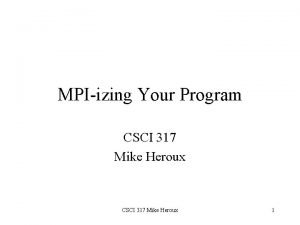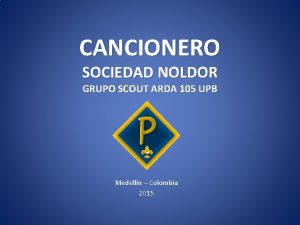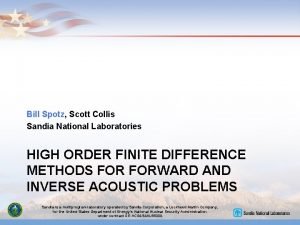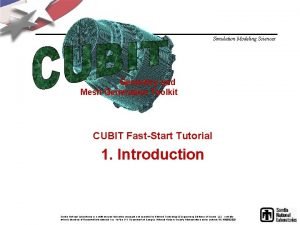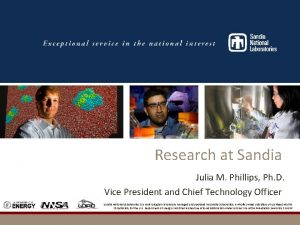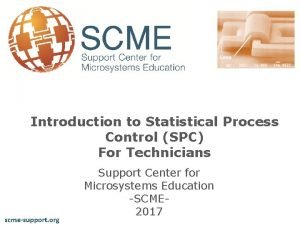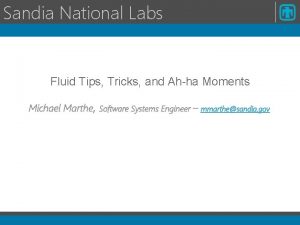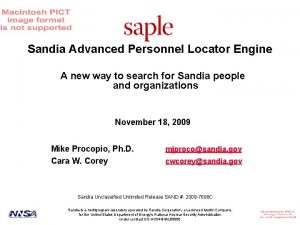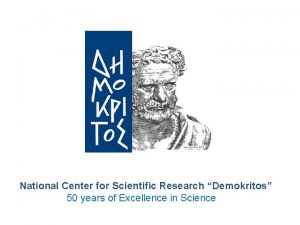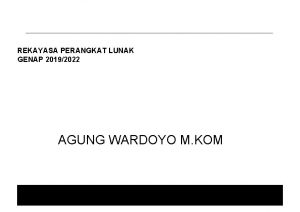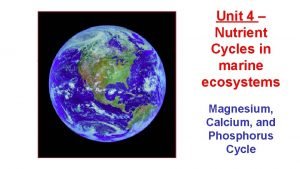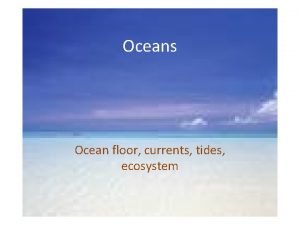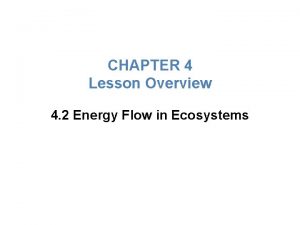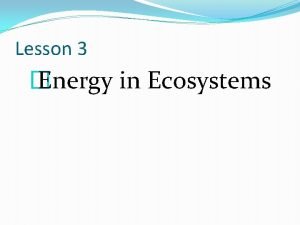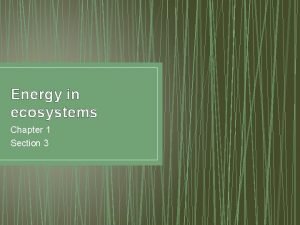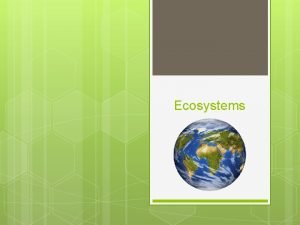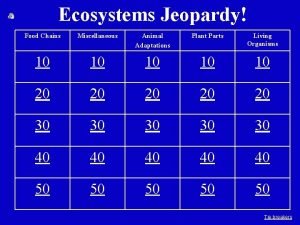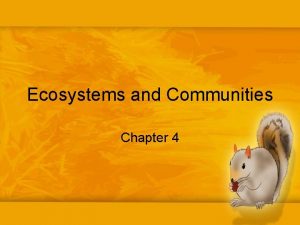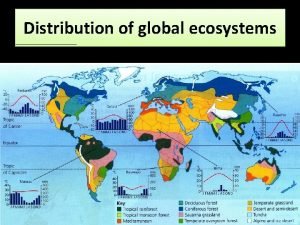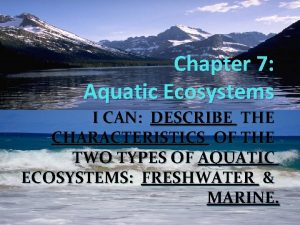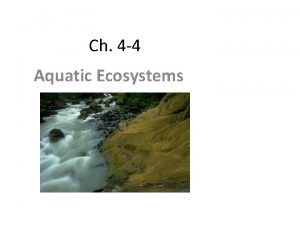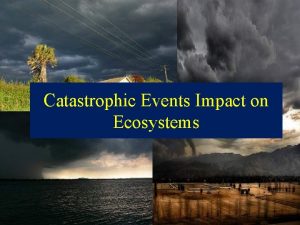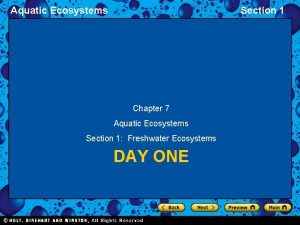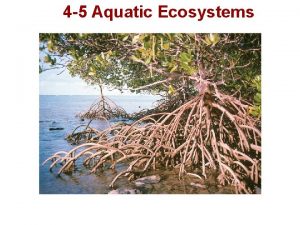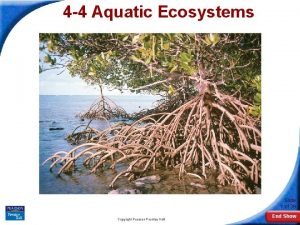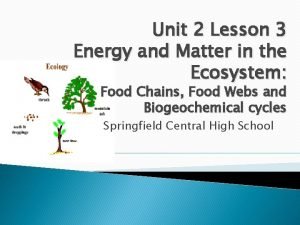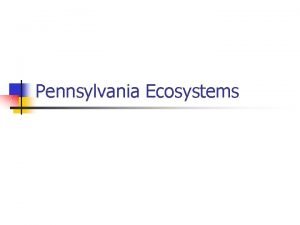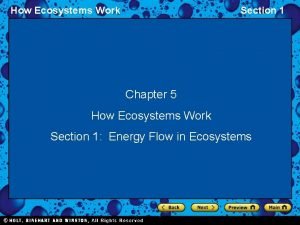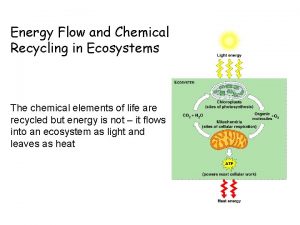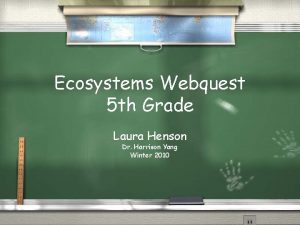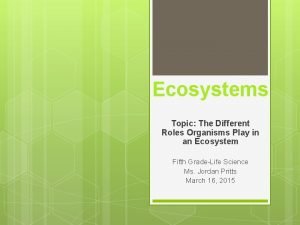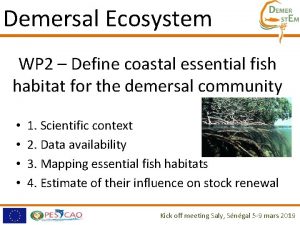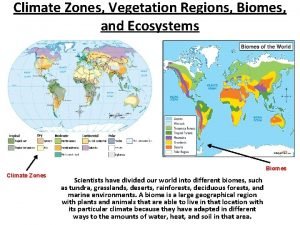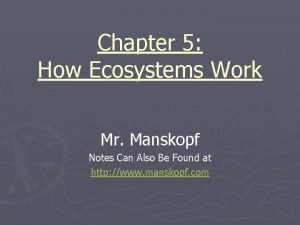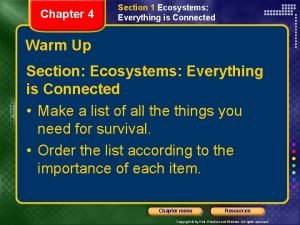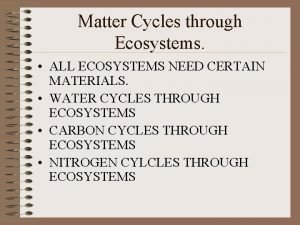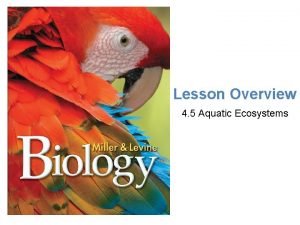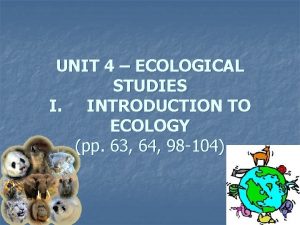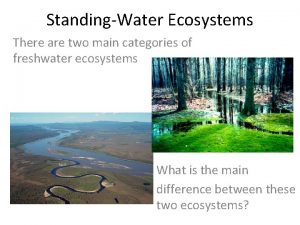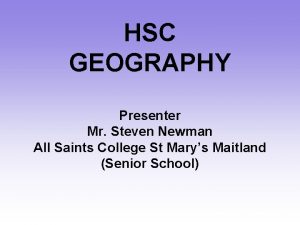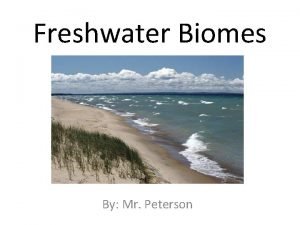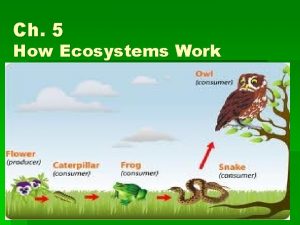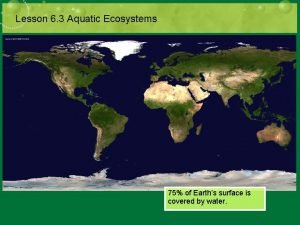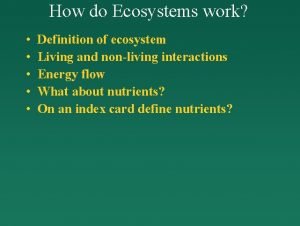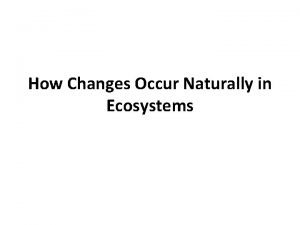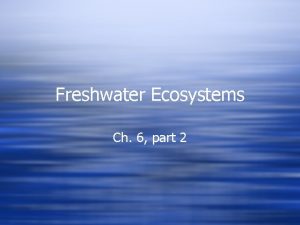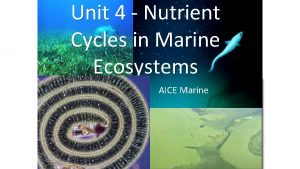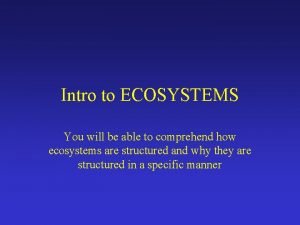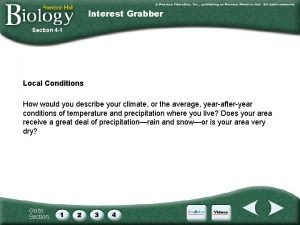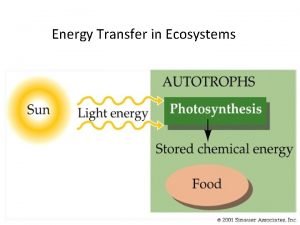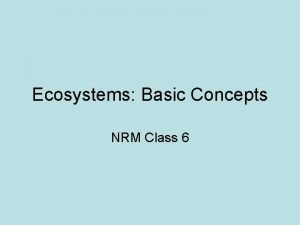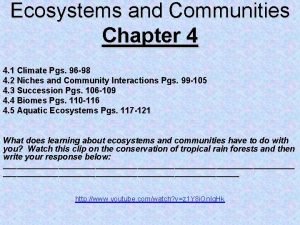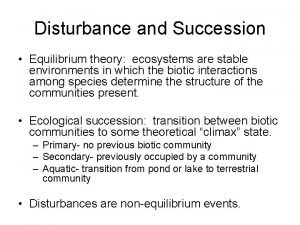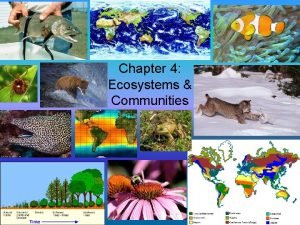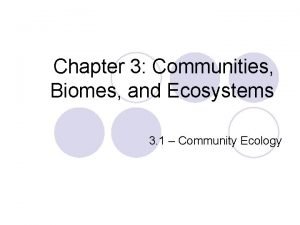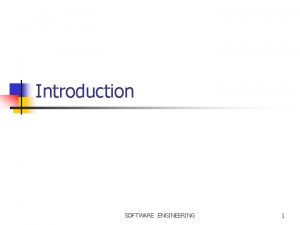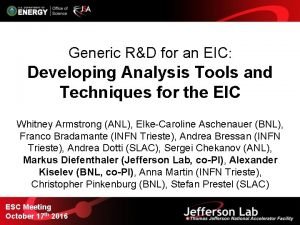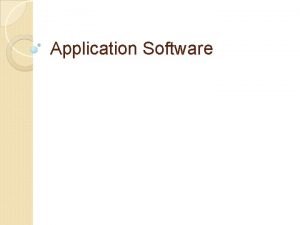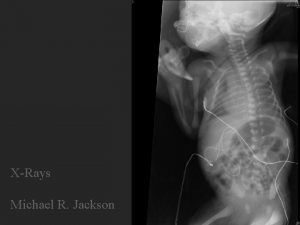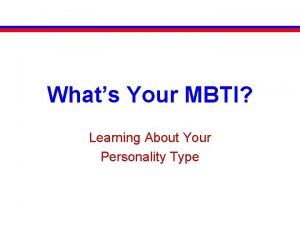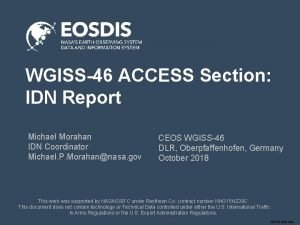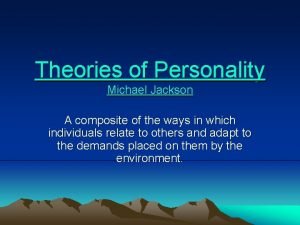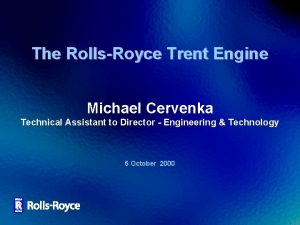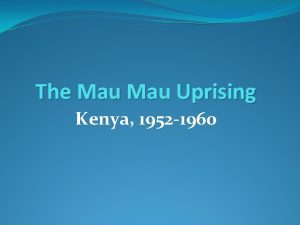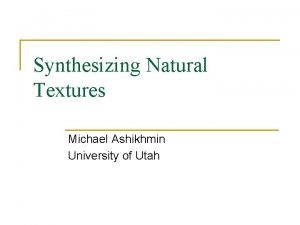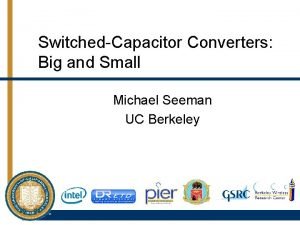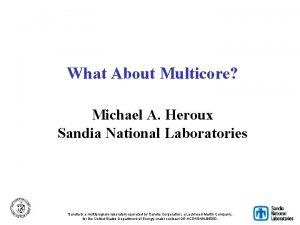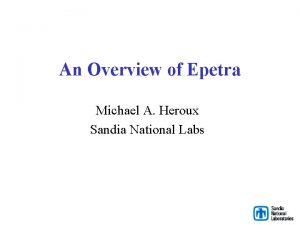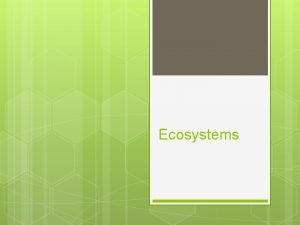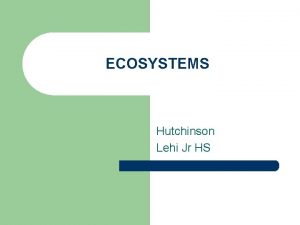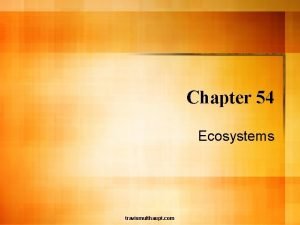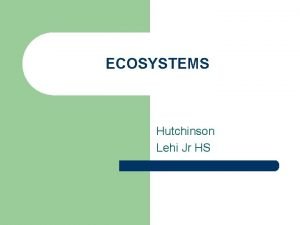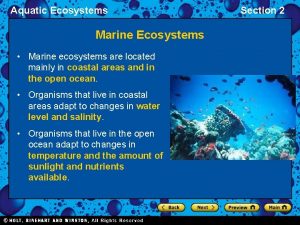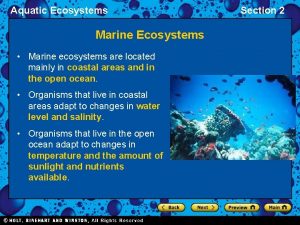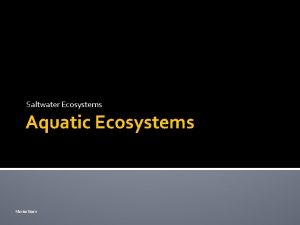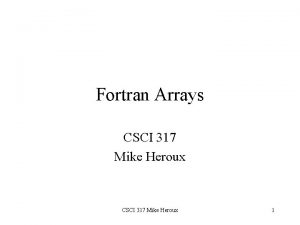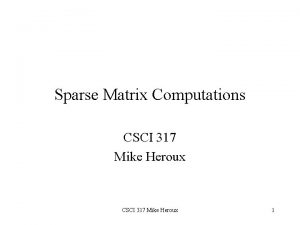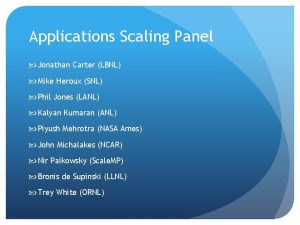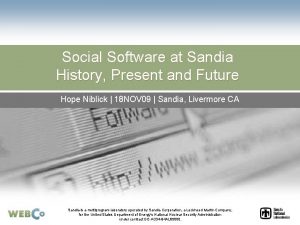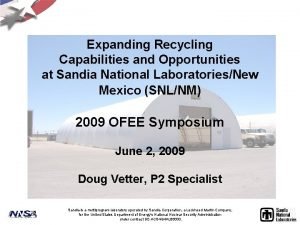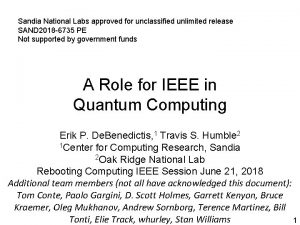Scientific Software Ecosystems Michael A Heroux Sandia National








































![A Simple Epetra/Aztec. OO Program // Header files omitted… int main(int argc, char *argv[]) A Simple Epetra/Aztec. OO Program // Header files omitted… int main(int argc, char *argv[])](https://slidetodoc.com/presentation_image_h/c5fb31328da83959ebfeacb09c465b2a/image-41.jpg)
























![A Simple Epetra/Aztec. OO Program // Header files omitted… int main(int argc, char *argv[]) A Simple Epetra/Aztec. OO Program // Header files omitted… int main(int argc, char *argv[])](https://slidetodoc.com/presentation_image_h/c5fb31328da83959ebfeacb09c465b2a/image-66.jpg)









































![Polymorphic Multidimensional Array View § View< double**[3][8] , Space > a(“a”, N, M); § Polymorphic Multidimensional Array View § View< double**[3][8] , Space > a(“a”, N, M); §](https://slidetodoc.com/presentation_image_h/c5fb31328da83959ebfeacb09c465b2a/image-108.jpg)


























- Slides: 134

Scientific Software Ecosystems Michael A. Heroux Sandia National Laboratories http: //www. users. csbsju. edu/~mheroux/Sci. Sw. Ecosystems. pdf 1 Sandia is a multiprogram laboratory operated by Sandia Corporation, a Lockheed Martin Company, for the United States Department of Energy under contract DE-AC 04 -94 AL 85000.

Goals for this presentation § Motivate the need for and value of reusable scientific software. § Understand the sparse linear algebra ecosystem. § Look ahead to next-generation systems. § Discuss productivity. § Take any questions you have. 2

Quiz (True/False) 1. 2. 3. 4. 5. 6. 7. 8. 9. 10. 3 Building an app via reusable SW components is always a good idea. Use of third party solvers is always a good idea. Control inversion is a means of customizing SW ecosystem behavior. Framework use must be an “all-in” commitment. Performance portability requires data structure abstractions. Operator abstractions enable sophisticated solution algorithms. Algorithm development for massive concurrency is the “easy” part of our job. Code optimization is always a good idea for HPC software. Containerization capabilities are important for scientific SW. Productivity must be a first-order, explicit focus for future scientific SW.

Basic Concepts § Framework: w APIs, working software (defaults). w Control inversion, extensibility. w Scope: Big, ubiquitous. § Toolkit: w “Plug-and-play” libraries, insertable. w Scope: Small, local. § Lightweight framework: Goal is best of framework/toolkit. § Ecosystem: Everything. 4

Modern Scientific App Design Goal § Classic approach: Develop an application. w App has its own framework, no reuse intended. w Makes some use of libraries (toolkit components). § Desired approach: Compose application within ecosystem. w Adapt lightweight framework elements. • For example: Use CMake, Doxygen, Unit. Test frameworks. w Integrate & tune libraries. • Load balancing, solvers, etc. 5

Extreme-scale Science Application (My. App_ Native code & data objects Domain component interfaces • • • Data mediator interactions. Hierarchical organization. Multiscale/multiphysics coupling. • • Meshes. Matrices, vectors. Library interfaces • • • Parameter lists. Interface adapters. Function calls. • • 6 Reacting flow, etc. Reusable. Libraries • • Source markup. Embedded examples. Testing content • • Unit tests. Test fixtures. Extreme. Scale Scientific SW Dev Kit (x. SDK) Build content • • Domain components Extreme-Scale Scientific Software Ecosystem Documentation content Shared data objects • • Single use code. Coordinated component use. Application specific. Solvers, etc. Interoperable. Rules. Parameters. Frameworks & tools • • Doc generators. Test, build framework. SW engineering • • Productivity tools. Models, processes.

Some Popular Ecosystems (Frameworks) § § 7 Cactus: http: //cactuscode. org FEni. CS: http: //fenicsproject. org/index. html Charm++: http: //charm. cs. uiuc. edu PETSc: https: //www. mcs. anl. gov/petsc/ (Will say more)

Trilinos Overview 8

What is Trilinos? § Object-oriented software framework for… § Solving big complex science & engineering problems § More like LEGO™ bricks than Matlab™ 9

Background/Motivation 10

Laptops to Leadership systems Optimal Kernels to Optimal Solutions: w Geometry, Meshing w Discretizations, Load Balancing. w Scalable Linear, Nonlinear, Eigen, Transient, Optimization, UQ solvers. w Scalable I/O, GPU, Manycore w 60 Packages. w Other distributions: w Cray LIBSCI w Public repo. w Thousands of Users. w Worldwide distribuion. 11

§ § 12 Capability Leaders: Layer of Proactive Leadership Areas: w Framework, Tools & Interfaces (J. Willenbring). w Software Engineering Technologies and Integration (R. Bartlett). w Discretizations (M. Perego). w Geometry, Meshing & Load Balancing (K. Devine). w Parallel Programming Models (H. C. Edwards) w Linear Algebra Services (M. Hoemmen). w Linear & Eigen Solvers (J. Hu). w Nonlinear, Transient & Optimization Solvers (A. Salinger). w Scalable I/O: (R. Oldfield) w User Experience: (W. Spotz) Each leader provides strategic direction across all Trilinos packages within area. 12

Unique features of Trilinos § § Huge library of algorithms w Linear and nonlinear solvers, preconditioners, … w Optimization, transients, sensitivities, uncertainty, … Growing support for multicore & hybrid CPU/GPU w Built into the new Tpetra linear algebra objects • Therefore into iterative solvers with zero effort! w Unified intranode programming model w Spreading into the whole stack: • Multigrid, sparse factorizations, element assembly… § § 13 Support for mixed and arbitrary precisions w Don’t have to rebuild Trilinos to use it Support for huge (> 2 B unknowns) problems

Trilinos Current Release § Trilinos 12. 4 current. w 57 packages. w But most people clone/fork directly from Git. Hub. com § Website: https: //trilinos. org. 14

Trilinos software organization 15

Trilinos Package Summary Discretizations Methods Services Solvers 16 Objective Package(s) Meshing & Discretizations STK, Intrepid, Pamgen, Sundance, ITAPS, Mesquite Time Integration Rythmos Automatic Differentiation Sacado Mortar Methods Moertel Linear algebra objects Epetra, Tpetra, Kokkos, Xpetra Interfaces Thyra, Stratimikos, RTOp, FEI, Shards Load Balancing Zoltan, Isorropia, Zoltan 2 “Skins” Py. Trilinos, Web. Trilinos, For. Trilinos, Ctrilinos, Optika C++ utilities, I/O, thread API Teuchos, Epetra. Ext, Kokkos, Triutils, Thread. Pool, Phalanx, Trios Iterative linear solvers Aztec. OO, Belos, Komplex Direct sparse linear solvers Amesos, Amesos 2, Shy. LU Direct dense linear solvers Epetra, Teuchos, Pliris Iterative eigenvalue solvers Anasazi, Rbgen ILU-type preconditioners Aztec. OO, IFPACK, Ifpack 2, Shy. LU Multilevel preconditioners ML, CLAPS, Muelu Block preconditioners Meros, Teko Nonlinear system solvers NOX, LOCA, Piro Optimization (SAND) MOOCHO, Aristos, Tri. Kota, Globipack, Optipack Stochastic PDEs Stokhos

Interoperability vs. Dependence (“Can Use”) (“Depends On”) § Although most Trilinos packages have no explicit dependence, often packages must interact with some other packages: w NOX needs operator, vector and linear solver objects. w Aztec. OO needs preconditioner, matrix, operator and vector objects. w Interoperability is enabled at configure time. w Trilinos cmake system is vehicle for: • Establishing interoperability of Trilinos components… • Without compromising individual package autonomy. • Trilinos_ENABLE_ALL_OPTIONAL_PACKAGES option § Architecture supports simultaneous development on many fronts. 17

§ Trilinos is made of packages Not a monolithic piece of software w § Each package: w w w § Like LEGO™ bricks, not Matlab™ Has its own development team and management Makes its own decisions about algorithms, coding style, etc. May or may not depend on other Trilinos packages Trilinos is not “indivisible” w You don’t need all of Trilinos to get things done w Any subset of packages can be combined and distributed w Current public release contains ~50 of the 55+ Trilinos packages § Trilinos top layer framework w w w 18 § § Not a large amount of source code: ~1. 5% Manages package dependencies • Like a GNU/Linux package manager Runs packages’ tests nightly, and on every check-in Package model supports multifrontal development New effort to create apps by gluing Trilinos together: Albany

Solver Software Stack Phase I packages: SPMD, int/double Phase II packages: Templated Optimization Unconstrained: MOOCHO Bifurcation Analysis Transient Problems DAEs/ODEs: Nonlinear Problems Linear Problems Linear Equations: Eigen Problems: Distributed Linear Algebra Matrix/Graph Equations: 19 Vector Problems: Sensitivities (Automatic Differentiation: Sacado) Constrained: LOCA Rythmos NOX Anasazi Ifpack, ML, etc. . . Aztec. OO Epetra Teuchos

Solver Software Stack Phase I packages Phase III packages: Manycore*, templated Optimization Unconstrained: MOOCHO Bifurcation Analysis Transient Problems DAEs/ODEs: Nonlinear Problems Linear Problems Linear Equations: Eigen Problems: Distributed Linear Algebra Matrix/Graph Equations: 20 Vector Problems: Sensitivities (Automatic Differentiation: Sacado) Constrained: LOCA T-LOCA Rythmos NOX T-NOX Anasazi Aztec. OO Ifpack, ML, etc. . . Epetra Belos* Ifpack 2*, Muelu*, etc. . . Tpetra* Kokkos* Teuchos

Sparse Linear Systems 21

Sparse Matrices § Sparse Matrix (defn): (not rigorous) An m-by-n matrix with enough zero entries that it makes sense to keep track of what is zero and nonzero. § Example: a 11 a 12 0 0 a 21 a 22 a 23 0 0 0 A = 0 a 32 a 33 a 34 0 0 a 43 a 44 a 45 0 0 a 54 a 55 a 56 0 0 a 65 a 66 22

Origins of Sparse Matrices § In practice, most large matrices are sparse. Specific sources: w Differential equations. • Encompasses the vast majority of scientific and engineering simulation. • E. g. , structural mechanics. – F = ma. Car crash simulation. w Stochastic processes. • Matrices describe probability distribution functions. w Networks. • Electrical and telecommunications networks. • Matrix element aij is nonzero if there is a wire connecting point i to point j. w 3 D imagery for Google Earth • Relies on Suite. Sparse (via the Ceres nonlinear least squares solver developed by Google). 23 w And more…

Sparse Linear Systems: Problem Definition § A frequent requirement for scientific and engineering computing is to solve: where Ax = b A is a known large (sparse) matrix a linear operator, b is a known vector, x is an unknown vector. Goal: Find x. 24

Why And How To Use Sparse Solver Libraries 25

§ A farmer had chickens and pigs. There was a total of 60 heads and 200 feet. How many chickens and how many pigs did the farmer have? § Let x be the number of chickens, y be the number of pigs. § Then: x + y = 60 2 x + 4 y = 200 § From first equation x = 60 – y, so replace x in second equation: 2(60 – y) + 4 y = 200 § Solve for y: 120 – 2 y + 4 y = 200 2 y = 80 y = 40 § Solve for x: x = 60 – 40 = 20. § The farmer has 20 chickens and 40 pigs. 26

§ § § 27 § § A restaurant owner purchased one box of frozen chicken and another box of frozen pork for $60. Later the owner purchased 2 boxes of chicken and 4 boxes of pork for $200. What is the cost of a box of frozen chicken and a box of frozen pork? Let x be the price of a box of chicken, y the price of a box of pork. Then: x + y = 60 2 x + 4 y = 200 From first equation x = 60 – y, so replace x in second equation: 2(60 – y) + 4 y = 200 Solve for y: 120 – 2 y + 4 y = 200 2 y = 80 y = 40 Solve for x: x = 60 – 40 = 20. A box of chicken costs $20 and a box of pork costs $40.

§ § § § 28 Problem Statement A restaurant owner purchased one box of frozen chicken and another box of frozen pork for $60. Later the owner purchased 2 boxes of chicken and 4 boxes of pork for $200. What is the cost of a box of frozen chicken and a box of frozen pork? Let x be the price of a box of chicken, y the price of a box of pork. Variables Then: Problem Setup x + y = 60 2 x + 4 y = 200 From first equation x = 60 – y, so replace x in second equation: 2(60 – y) + 4 y = 200 Solution Method Solve for y: 120 – 2 y + 4 y = 200 2 y = 80 y = 40 Solve for x: x = 60 – 40 = 20. A box of chicken costs $20. A box of pork costs $40. Translate Back

Why Sparse Solver Libraries? § Many types of problems. § Similar Mathematics. § Separation of concerns: App 29 w w w Problem Statement. Translation to Math. Set up problem. Solve Problem. Translate Back. Super. LU

Importance of Sparse Solver Libraries § Computer solution of math problems is hard: w Floating point arithmetic not exact: • 1 + ε = 1, for small ε > 0. • (a + b) + c not always equal to a + (b + c). w High fidelity leads to large problems: 1 M to 10 B equations. w Clusters require coordinated solution across 100 – 1 M processors. § Sophisticated solution algorithms and libraries leveraged: w Solver expertise highly specialized, expensive. w Write code once, use in many settings. § Trilinos is a large collection of state-of-the-art work: 30 w The latest in scientific algorithms. w Modern software design and architecture. w Large and growing support for manycore and accelerator devices.

Sparse Direct Methods § Construct L and U, lower and upper triangular, resp, s. t. LU = A § Solve Ax = b: § 1. Ly = b 2. Ux = y Symmetric versions: LLT = A, LDLT § When are direct methods effective? w w § 31 1 D: Always, even on many, many processors. 2 D: Almost always, except on many, many processors. 2. 5 D: Most of the time. 3 D: Only for “small/medium” problems on “small/medium” processor counts. Bottom line: Direct sparse solvers should always be in your toolbox.

§ § § § § Sparse Direct Solver Packages HSL: http: //www. hsl. rl. ac. uk MUMPS: http: //mumps. enseeiht. fr Pardiso: http: //www. pardiso-project. org Pa. Sti. X: http: //pastix. gforge. inria. fr Suite. Sparse: http: //www. cise. ufl. edu/research/sparse/Suite. Sparse Super. LU: http: //crd-legacy. lbl. gov/~xiaoye/Super. LU/index. html UMFPACK : http: //www. cise. ufl. edu/research/sparse/umfpack/ WSMP: http: //researcher. watson. ibm. com/researcher/view_project. php? id=1426 Trilinos/Amesos 2: http: //trilinos. org Notes: w w w § 32 All have threaded parallelism. All but Suite. Sparse and UMFPACK have distributed memory (MPI) parallelism. MUMPS, Pa. Sti. X, Suite. Sparse, Super. LU, Trilinos, UMFPACK are freely available. HSL, Pardiso, WSMP are available freely, with restrictions. Some research efforts on GPUs, unaware of any products. Emerging hybrid packages: w w w PDSLin – Sherry Li. HIPS – Gaidamour, Henon. Trilinos/Shy. LU – Rajamanickam, Boman, Heroux.

Other Sparse Direct Solver Packages § “Legagy” packages that are open source but not under active development today. w TAUCS : http: //www. tau. ac. il/~stoledo/taucs/ w PSPASES : http: //www-users. cs. umn. edu/~mjoshi/pspases/ w BCSLib : http: //www. boeing. com/phantom/bcslib/ § Eigen http: //eigen. tuxfamily. org w Newer, active, but sequential only (for sparse solvers). w Sparse Cholesky (including LDL^T), Sparse LU, Sparse QR. w Wrappers to quite a few third-party sparse direct solvers. 33

Emerging Trend in Sparse Direct § New work in low-rank approximations to off-diagonal blocks. § Typically: w Off-diagonal blocks in the factorization stored as dense matrices. § New: w These blocks have low rank (up to the accuracy needed for solution). w Can be represented by approximate SVD. § Still uncertain how broad the impact will be. w Will rank-k SVD continue to have low rank for hard problems? § Potential: Could be breakthrough for extending sparse direct method to much larger 3 D problems. 34

35 Iterative Methods § Given an initial guess for x, called x(0), (x(0) = 0 is acceptable) compute a sequence x(k), k = 1, 2, … such that each x(k) is “closer” to x. § Definition of “close”: w w w Suppose x(k) = x exactly for some value of k. Then r(k) = b – Ax(k) = 0 (the vector of all zeros). And norm(r(k)) = sqrt(<r(k), r(k)>) = 0 (a number). For any x(k), let r(k) = b – Ax(k) If norm(r(k)) = sqrt(<r(k), r(k)>) is small (< 1. 0 E-6 say) then we say that x(k) is close to x. w The vector r is called the residual vector. 35

What is preconditioning? Denote the linear system (user’s problem): Preconditioning: given M such that: Solve the preconditioned system: Where: The art of preconditioning: 36 is close to identity, or nice properties Inverse can be applied efficiently

Sparse Iterative Solver Packages § § § § PETSc: http: //www. mcs. anl. gov/petsc hypre: https: //computation. llnl. gov/casc/linear_solvers/sls_hypre. html Trilinos: http: //trilinos. sandia. gov Paralution: http: //www. paralution. com (Manycore; GPL/Commercial license) HSL: http: //www. hsl. rl. ac. uk (Academic/Commercial License) Eigen http: //eigen. tuxfamily. org (Sequential CG, Bi. CGSTAB, ILUT/Sparskit) Sparskit: http: //www-users. cs. umn. edu/~saad/software Notes: w There are many other efforts, but I am unaware of any that have a broad user base like hypre, PETSc and Trilinos. w Sparskit, and other software by Yousef Saad, is not a product with a large official user base, but these codes appear as embedded (serial) source code in many applications. w PETSc and Trilinos support threading, distributed memory (MPI) and growing functionality for accelerators. w Many of the direct solver packages support some kind of iteration, if only iterative refinement. 37

Which Type of Solver to Use? 38 Dimension Type Notes 1 D Direct Often tridiagonal (Thomas alg, periodic version). 2 D very easy Iterative If you have a good initial guess, e. g. , transient simulation. 2 D otherwise Direct Almost always better than iterative. 2. 5 D Direct Example: shell problems. Good ordering can keep fill low. 3 D “smooth” Direct? Emerging methods for low-rank SVD representation. 3 D easy Iterative Simple preconditioners: diagonal scaling. CG or Bi. CGSTAB. 3 D harder Iterative Prec: IC, ILU (with domain decomposition if in parallel). 3 D hard Iterative Use GMRES (without restart if possible). 3 D + large Iterative Add multigrid, geometric or algebraic.

39 Using Trilinos Linear Solvers 39

Trilinos Package Summary Discretizations Methods Services Solvers 40 Objective Package(s) Meshing & Discretizations STKMesh, Intrepid, Pamgen, Sundance, Mesquite Time Integration Rythmos Automatic Differentiation Sacado Mortar Methods Moertel Linear algebra objects Epetra, Tpetra, Kokkos Interfaces Xpetra, Thyra, Stratimikos, RTOp, FEI, Shards Load Balancing Zoltan, Isorropia, Zoltan 2 “Skins” Py. Trilinos, Web. Trilinos, For. Trilinos, Ctrilinos, Optika Utilities, I/O, thread API Teuchos, Epetra. Ext, Kokkos, Triutils, Thread. Pool, Phalanx Iterative linear solvers Aztec. OO, Belos, Komplex Direct sparse linear solvers Amesos, Amesos 2, Shy. LU Incomplete factorizations Aztec. OO, IFPACK, Ifpack 2 Multilevel preconditioners ML, CLAPS, Mue. Lu Direct dense linear solvers Epetra, Teuchos, Pliris Iterative eigenvalue solvers Anasazi Block preconditioners Meros, Teko Nonlinear solvers NOX, LOCA Optimization MOOCHO, Aristos, Tri. Kota, Globipack, Optipack Stochastic PDEs Stokhos
![A Simple EpetraAztec OO Program Header files omitted int mainint argc char argv A Simple Epetra/Aztec. OO Program // Header files omitted… int main(int argc, char *argv[])](https://slidetodoc.com/presentation_image_h/c5fb31328da83959ebfeacb09c465b2a/image-41.jpg)
A Simple Epetra/Aztec. OO Program // Header files omitted… int main(int argc, char *argv[]) { MPI_Init(&argc, &argv); int main(int argc, char *argv[]) { // Initialize MPI, Mpi. Comm Epetra_Serial. Comm(); Epetra_Mpi. Comm( MPI_COMM_WORLD ); // ***** Map puts same number of equations on each pe ***** int Num. My. Elements = 1000 ; Epetra_Map Map(-1, Num. My. Elements, 0, Comm); int Num. Global. Elements = Map. Num. Global. Elements(); // ***** Create an Epetra_Matrix tridiag(-1, 2, -1) ***** Epetra_Crs. Matrix A(Copy, Map, 3); double neg. One = -1. 0; double pos. Two = 2. 0; for (int i=0; i<Num. My. Elements; i++) { int Global. Row = A. GRID(i); int Row. Less 1 = Global. Row - 1; int Row. Plus 1 = Global. Row + 1; if (Row. Less 1!=-1) A. Insert. Global. Values(Global. Row, 1, &neg. One, &Row. Less 1); if (Row. Plus 1!=Num. Global. Elements) A. Insert. Global. Values(Global. Row, 1, &neg. One, &Row. Plus 1); A. Insert. Global. Values(Global. Row, 1, &pos. Two, &Global. Row); } A. Fill. Complete(); // Transform from GIDs to LIDs // ***** Create x and b vectors ***** Epetra_Vector x(Map); Epetra_Vector b(Map); b. Random(); // Fill RHS with random #s // ***** Create Linear Problem ***** Epetra_Linear. Problem problem(&A, &x, &b); // ***** Create/define Aztec. OO instance, solve ***** Aztec. OO solver(problem); Teuchos: : Parameter. List parameterlist; parameterlist. set("precond", "Jacobi"); solver. Set. Parameters(parameterlist); solver. Iterate(1000, 1. 0 E-8); // ***** Report results, finish ************ cout << "Solver performed " << solver. Num. Iters() << " iterations. " << endl << "Norm of true residual = " << solver. True. Residual() << endl; MPI_Finalize() ; return 0; }

Solving Ax = b: Typical Petra Object Construction Sequence Construct Comm Construct Map Construct x Construct b 42 • Any number of Comm objects can exist. • Comms can be nested (e. g. , serial within MPI). • Maps describe parallel layout. • Maps typically associated with more than one comp object. • Two maps (source and target) define an export/import object. Construct A • Computational objects. • Compatibility assured via common map

Petra Implementations § Epetra (Essential Petra): w w Legacy production version Uses stable core subset of C++ (circa 2000) Restricted to real, double precision arithmetic Interfaces accessible to C and Fortran users § Tpetra (Templated Petra): w Next-generation version w C++ compiler must be C++11 compliant. w Supports arbitrary scalar and index types via templates • Arbitrary- and mixed-precision arithmetic • 64 -bit indices for solving problems with >2 billion unknowns w Hybrid MPI / shared-memory parallel 43 • Supports multicore CPU and hybrid CPU/GPU • Built on Kokkos manycore node library

Trilinos Package Summary Discretizations Methods Services Solvers 44 Objective Package(s) Meshing & Discretizations STKMesh, Intrepid, Pamgen, Sundance, Mesquite Time Integration Rythmos Automatic Differentiation Sacado Mortar Methods Moertel Linear algebra objects Epetra, Tpetra, Kokkos Interfaces Xpetra, Thyra, Stratimikos, RTOp, FEI, Shards Load Balancing Zoltan, Isorropia, Zoltan 2 “Skins” Py. Trilinos, Web. Trilinos, For. Trilinos, Ctrilinos, Optika Utilities, I/O, thread API Teuchos, Epetra. Ext, Kokkos, Triutils, Thread. Pool, Phalanx Iterative linear solvers Aztec. OO, Belos, Komplex Direct sparse linear solvers Amesos, Amesos 2, Shy. LU Incomplete factorizations Aztec. OO, IFPACK, Ifpack 2 Multilevel preconditioners ML, CLAPS, Mue. Lu Direct dense linear solvers Epetra, Teuchos, Pliris Iterative eigenvalue solvers Anasazi Block preconditioners Meros, Teko Nonlinear solvers NOX, LOCA Optimization MOOCHO, Aristos, Tri. Kota, Globipack, Optipack Stochastic PDEs Stokhos

45 Aztec. OO § § Iterative linear solvers: CG, GMRES, Bi. CGSTAB, … Incomplete factorization preconditioners § Aztec was Sandia’s workhorse solver: w w w § Aztec. OO improves on Aztec by: w w w § Using Epetra objects for defining matrix and vectors Providing more preconditioners & scalings Using C++ class design to enable more sophisticated use Aztec. OO interface allows: w w 45 Extracted from the MPSalsa reacting flow code Installed in dozens of Sandia apps 1900+ external licenses Continued use of Aztec for functionality Introduction of new solver capabilities outside of Aztec

Belos § Next-generation linear iterative solvers § Decouples algorithms from linear algebra objects w Linear algebra library has full control over data layout and kernels w Improvement over Aztec. OO, which controlled vector & matrix layout w Essential for hybrid (MPI+X) parallelism § § Solves problems that apps really want to solve, faster: w Multiple right-hand sides: AX=B w Sequences of related systems: (A + ΔAk) Xk = B + ΔBk Many advanced methods for these types of systems w w § § 46 Block & pseudoblock solvers: GMRES & CG Recycling solvers: GCRODR (GMRES) & CG “Seed” solvers (hybrid GMRES) Block orthogonalizations (TSQR) Supports arbitrary & mixed precision, complex, … If you have a choice, pick Belos over Aztec. OO 46

47 Ifpack(2): Algebraic preconditioners § Preconditioners: w Overlapping domain decomposition w Incomplete factorizations (within an MPI process) w (Block) relaxations & Chebyshev § § § Accepts user matrix via abstract matrix interface Use {E, T}petra for basic matrix / vector calculations Perturbation stabilizations & condition estimation Can be used by all other Trilinos solver packages Ifpack 2: Tpetra version of Ifpack w Supports arbitrary precision & complex arithmetic w Path forward to hybrid-parallel factorizations 47

48 : Multi-level Preconditioners § Smoothed aggregation, multigrid, & domain decomposition § Critical technology for scalable performance of many apps § ML compatible with other Trilinos packages: w Accepts Epetra sparse matrices & dense vectors w ML preconditioners can be used by Aztec. OO, Belos, & Anasazi § Can also be used independent of other Trilinos packages § Next-generation version of ML: Mue. Lu w Works with Epetra or Tpetra objects (via Xpetra interface) 48

49 Mue. Lu: Next-gen algebraic multigrid § Motivation for replacing ML w Improve maintainability & ease development of new algorithms w Decouple computational kernels from algorithms • • ML mostly monolithic (& 50 K lines of code) Mue. Lu relies more on other Trilinos packages w Exploit Tpetra features • • • § § MPI+X (Kokkos programming model mitigates risk) 64 -bit global indices (to solve problems with >2 B unknowns) Arbitrary Scalar types (Tramonto runs Mue. Lu w/ double-double) Works with Epetra or Tpetra (via Xpetra common interface) Facilitate algorithm development w Energy minimization methods w Geometric or classic algebraic multigrid; mix methods together § Better support for preconditioner reuse w Explore options between “blow it away” & reuse without change 49

Amesos/Amesos 2 § Direct Solver interface for the Epetra/Tpetra Stack. § Typical Usage: w pre. Order(), w symbolic. Factorization(), w numeric. Factorization(), w solve(). § Easy to support new solvers (Current support for all the Super. LU variants). § Easy to support new multivectors and sparse matrices. § Can support third party solver specific parameters with little changes. § Available in the current release of Trilinos. 50

Shy. LU and Subdomain Solvers : Overview Ifpack 2 Amesos 2 Shy. LU KLU 2 Basker Tacho FAST-ILU Kokkos. Kernels – SGS, Tri-Solve (HTS) ▪ MPI+X based subdomain solvers ▪ Decouple the notion of one MPI rank as one subdomain: Subdomains can span multiple MPI ranks each with its own subdomain solver using X or MPI+X ▪ Epetra based solver, Tpetra interface still being developed ▪ ▪ 51 Trilinos Solver Factory a big step forward to get this done (Thanks to M. Hoemmen) Subpackages of Shy. LU: Multiple Kokkos-based options for on-node parallelism ▪ Basker : LU or ILU (t) factorization (J. Booth) ▪ Tacho: Incomplete Cholesky - IC (k) (K. Kim) ▪ Fast-ILU: Fast-ILU factorization for GPUs (A. Patel) ▪ Kokkos. Kernels: Coloring based Gauss-Seidel (M. Deveci), Triangular Solves ▪ Experimental code base under active development.

52 Abstract solver interfaces & applications 52

Stratimikos package • Greek στρατηγική (strategy) + γραμμικός (linear) • Uniform run-time interface to many different packages’ • Linear solvers: Amesos, Aztec. OO, Belos, … • Preconditioners: Ifpack, ML, … • Defines common interface to create and use linear solvers • Reads in options through a Teuchos: : Parameter. List • Can change solver and its options at run time • Can validate options, & read them from a string or XML file • Accepts any linear system objects that provide • Epetra_Operator / Epetra_Row. Matrix view of the matrix • Vector views (e. g. , Epetra_Multi. Vector) for right-hand side and initial guess • Increasing support for Tpetra objects 53

Stratimikos Parameter List and Sublists Top level parameters Linear Solvers Preconditioners <Parameter. List name=“Stratimikos”> <Parameter name="Linear Solver Type" type="string" value=“Aztec. OO"/> <Parameter name="Preconditioner Type" type="string" value="Ifpack"/> <Parameter. List name="Linear Solver Types"> <Parameter. List name="Amesos"> <Parameter name="Solver Type" type="string" value="Klu"/> <Parameter. List name="Amesos Settings"> <Parameter name="Matrix. Property" type="string" value="general"/>. . . <Parameter. List name="Mumps">. . . </Parameter. List> <Parameter. List name="Superludist">. . . </Parameter. List> <Parameter. List name="Aztec. OO"> <Parameter. List name="Forward Solve"> <Parameter name="Max Iterations" type="int" value="400"/> <Parameter name="Tolerance" type="double" value="1 e-06"/> <Parameter. List name="Aztec. OO Settings"> <Parameter name="Aztec Solver" type="string" value="GMRES"/>. . . </Parameter. List> <Parameter. List name="Belos">. . . (Details omitted). . . </Parameter. List> <Parameter. List name="Preconditioner Types"> <Parameter. List name="Ifpack"> <Parameter name="Prec Type" type="string" value="ILU"/> <Parameter name="Overlap" type="int" value="0"/> <Parameter. List name="Ifpack Settings"> <Parameter name="fact: level-of-fill" type="int" value="0"/>. . . </Parameter. List> <Parameter. List name="ML">. . . (Details omitted). . . </Parameter. List> Sublists passed on to package code. Every parameter and sublist is handled by Thyra code and is fully validated.

Stratimikos Parameter List and Sublists Top level parameters Linear Solvers Preconditioners <Parameter. List name=“Stratimikos”> <Parameter name="Linear Solver Type" type="string" value=“Belos"/> <Parameter name="Preconditioner Type" type="string" value=”ML"/> <Parameter. List name="Linear Solver Types"> <Parameter. List name="Amesos"> <Parameter name="Solver Type" type="string" value="Klu"/> <Parameter. List name="Amesos Settings"> <Parameter name="Matrix. Property" type="string" value="general"/>. . . <Parameter. List name="Mumps">. . . </Parameter. List> <Parameter. List name="Superludist">. . . </Parameter. List> <Parameter. List name="Aztec. OO"> <Parameter. List name="Forward Solve"> <Parameter name="Max Iterations" type="int" value="400"/> <Parameter name="Tolerance" type="double" value="1 e-06"/> <Parameter. List name="Aztec. OO Settings"> <Parameter name="Aztec Solver" type="string" value="GMRES"/>. . . </Parameter. List> <Parameter. List name="Belos">. . . (Details omitted). . . </Parameter. List> <Parameter. List name="Preconditioner Types"> <Parameter. List name="Ifpack"> <Parameter name="Prec Type" type="string" value="ILU"/> <Parameter name="Overlap" type="int" value="0"/> <Parameter. List name="Ifpack Settings"> <Parameter name="fact: level-of-fill" type="int" value="0"/>. . . </Parameter. List> <Parameter. List name="ML">. . . (Details omitted). . . </Parameter. List> Solver/preconditio ner changed by single argument. Parameter list is standard XML. Can be read from command line, file, string or hand-coded.

Parameter List Validation

Error Messages for Improper Parameters/Sublists Example: User misspells “Aztec Solver” as “ztec Solver” <Parameter. List> <Parameter name="Linear Solver Type" type="string" value="Aztec. OO"/> <Parameter. List name="Linear Solver Types"> <Parameter. List name="Aztec. OO"> <Parameter. List name="Forward Solve"> <Parameter. List name="Aztec. OO Settings"> <Parameter name="ztec Solver" type="string" value="GMRES"/> </Parameter. List> Error message generated from PL: : validate. Parameters(…) with exception: Error, the parameter {name="ztec Solver", type="string", value="GMRES"} in the parameter (sub)list "Real. Linear. Solver. Builder->Linear Solver Types->Aztec. OO->Forward Solve->Aztec. OO Settings" was not found in the list of valid parameters! The valid parameters and types are: { "Aztec Preconditioner" : string = ilu "Aztec Solver" : string = GMRES … }

Error Messages for Improper Parameters/Sublists Example: User specifies the wrong type for “Aztec Solver” <Parameter. List> <Parameter name="Linear Solver Type" type="string" value="Aztec. OO"/> <Parameter name="Preconditioner Type" type="string" value="Ifpack"/> <Parameter. List name="Linear Solver Types"> <Parameter. List name="Aztec. OO"> <Parameter. List name="Forward Solve"> <Parameter. List name="Aztec. OO Settings"> <Parameter name="Aztec Solver" type="int" value="GMRES"/> </Parameter. List> Error message generated from PL: : validate. Parameters(…) with exception: Error, the parameter {param. Name="Aztec Solver", type="int"} in the sublist "Default. Real. Linear. Solver. Builder->Linear Solver Types->Aztec. OO->Forward Solve->Aztec. OO Settings" has the wrong type. The correct type is "string"!

Error Messages for Improper Parameters/Sublists Example: User specifies the wrong value for “Aztec Solver” <Parameter. List> <Parameter name="Linear Solver Type" type="string" value="Aztec. OO"/> <Parameter name="Preconditioner Type" type="string" value="Ifpack"/> <Parameter. List name="Linear Solver Types"> <Parameter. List name="Aztec. OO"> <Parameter. List name="Forward Solve"> <Parameter. List name="Aztec. OO Settings"> <Parameter name="Aztec Solver" type=“string" value="GMRESS"/> </Parameter. List> Error message generated from PL: : validate. Parameters(…) with exception: Error, the value "GMRESS" is not recognized for the parameter "Aztec Solver" in the sublist "". Valid selections include: "CG", "GMRES", "CGS", "TFQMR", "Bi. CGStab", "LU".

Stratimikos Details • Stratimikos has just one primary class: – Stratimikos: : Default. Linear. Solver. Builder – An instance of this class accepts a parameter list that defines: • Linear Solver: Amesos, Aztec. OO, Belos. • Preconditioner: Ifpack, ML, Aztec. OO. • Albany, other apps: – Access solvers through Stratimikos. – Parameter list is standard XML. Can be: • Read from command line. • Read from a file. • Passed in as a string. • Defined interactively. • Hand coded in source code. 60

Combining Trilinos Packages To Solve Linear Systems

Tpetra/Epetra User Class Categories 62 w Sparse Matrices: Row. Matrix, (Crs. Matrix, Vbr. Matrix, FECrs. Matrix, …) w Linear Operator: (Belos, Aztec. OO, ML Muelu, Ifpack/2, …) w Vectors: Vector, Multi. Vector w Graphs: Crs. Graph w Data Layout: Map, Block. Map, Local. Map w Redistribution: Import, Export w Aggregates: Linear. Problem w Parallel Machine: Comm, (Serial. Comm, Mpi. Smp. Comm)

Matrix Class Inheritance Details Crs. Matrix and Vbr. Matrix inherit from: • Distributed Object: How data is spread across machine. • Computational Object: Performs FLOPS. • BLAS: Use BLAS kernels. • Row. Matrix: An object from either class has a common row access interface. 63

Belos/Aztec. OO Extensibility § Designed to accept externally defined: w Operators (both A and M): • The linear operator A is accessed as an Epetra_Operator. • Users can register a preconstructed preconditioner as an Epetra_Operator. w Row. Matrix: • If A is registered as a Row. Matrix, Trilinos preconditioners are accessible. • Alternatively M can be registered separately as an Epetra_Row. Matrix, and Trilinos preconditioners are accessible. w Status. Tests: • Standard stopping criteria are accessible. • Can override these mechanisms by registering a Status. Test Object. 64

Belos/Aztec. OO understands Epetra_Operator § Designed to accept externally defined: w Operators (both A and M). w Row. Matrix (Facilitates use of Aztec. OO preconditioners with external A). w Status. Tests (externallydefined stopping criteria). 65
![A Simple EpetraAztec OO Program Header files omitted int mainint argc char argv A Simple Epetra/Aztec. OO Program // Header files omitted… int main(int argc, char *argv[])](https://slidetodoc.com/presentation_image_h/c5fb31328da83959ebfeacb09c465b2a/image-66.jpg)
A Simple Epetra/Aztec. OO Program // Header files omitted… int main(int argc, char *argv[]) { MPI_Init(&argc, &argv); // Initialize MPI, Mpi. Comm Epetra_Mpi. Comm( MPI_COMM_WORLD ); // ***** Map puts same number of equations on each pe ***** int Num. My. Elements = 1000 ; Epetra_Map Map(-1, Num. My. Elements, 0, Comm); int Num. Global. Elements = Map. Num. Global. Elements(); // ***** Create an Epetra_Matrix tridiag(-1, 2, -1) ***** Epetra_Crs. Matrix A(Copy, Map, 3); double neg. One = -1. 0; double pos. Two = 2. 0; for (int i=0; i<Num. My. Elements; i++) { int Global. Row = A. GRID(i); int Row. Less 1 = Global. Row - 1; int Row. Plus 1 = Global. Row + 1; if (Row. Less 1!=-1) A. Insert. Global. Values(Global. Row, 1, &neg. One, &Row. Less 1); if (Row. Plus 1!=Num. Global. Elements) A. Insert. Global. Values(Global. Row, 1, &neg. One, &Row. Plus 1); A. Insert. Global. Values(Global. Row, 1, &pos. Two, &Global. Row); } A. Fill. Complete(); // Transform from GIDs to LIDs // ***** Create x and b vectors ***** Epetra_Vector x(Map); Epetra_Vector b(Map); b. Random(); // Fill RHS with random #s // ***** Create Linear Problem ***** Epetra_Linear. Problem problem(&A, &x, &b); // ***** Create/define Aztec. OO instance, solve ***** Aztec. OO solver(problem); Teuchos: : Parameter. List parameterlist; parameterlist. set("precond", "Jacobi"); solver. Set. Parameters(parameterlist); solver. Iterate(1000, 1. 0 E-8); // ***** Report results, finish ************ cout << "Solver performed " << solver. Num. Iters() << " iterations. " << endl << "Norm of true residual = " << solver. True. Residual() << endl; MPI_Finalize() ; return 0; }

Aztec. OO with ML Trilinos/packages/aztecoo/example/MLAztec. OO // Header files omitted… int main(int argc, char *argv[]) { MPI_Init(&argc, &argv); // Initialize MPI, Mpi. Comm Epetra_Mpi. Comm( MPI_COMM_WORLD ); // ***** Map puts same number of equations on each pe ***** int Num. My. Elements = 1000 ; Epetra_Map Map(-1, Num. My. Elements, 0, Comm); int Num. Global. Elements = Map. Num. Global. Elements(); // ***** Create an Epetra_Matrix tridiag(-1, 2, -1) ***** Epetra_Crs. Matrix A(Copy, Map, 3); double neg. One = -1. 0; double pos. Two = 2. 0; for (int i=0; i<Num. My. Elements; i++) { int Global. Row = A. GRID(i); int Row. Less 1 = Global. Row - 1; int Row. Plus 1 = Global. Row + 1; if (Row. Less 1!=-1) A. Insert. Global. Values(Global. Row, 1, &neg. One, &Row. Less 1); if (Row. Plus 1!=Num. Global. Elements) A. Insert. Global. Values(Global. Row, 1, &neg. One, &Row. Plus 1); A. Insert. Global. Values(Global. Row, 1, &pos. Two, &Global. Row); } A. Fill. Complete(); // Transform from GIDs to LIDs // ***** Create x and b vectors ***** Epetra_Vector x(Map); Epetra_Vector b(Map); b. Random(); // Fill RHS with random #s // ***** Create Linear Problem ***** Epetra_Linear. Problem problem(&A, &x, &b); // ***** Create/define Aztec. OO instance, solve ***** Aztec. OO solver(problem); // Code from next slide gets inserted here. solver. Iterate(1000, 1. 0 E-8); // ***** Report results, finish ************ cout << "Solver performed " << solver. Num. Iters() << " iterations. " << endl << "Norm of true residual = " << solver. True. Residual() << endl; MPI_Finalize() ; return 0; }

ML Preconditioner Setup cout << "Creating multigrid hierarchy" << endl; ML *ml_handle; int N_levels = 10; ML_Set_Print. Level(3); ML_Create(&ml_handle, N_levels); Epetra. Matrix 2 MLMatrix(ml_handle, 0, &A); 68 ML_Aggregate *agg_object; ML_Aggregate_Create(&agg_object); ML_Aggregate_Set_Max. Coarse. Size(agg_object, 1); N_levels = ML_Gen_MGHierarchy_Using. Aggregation(ml_handle, 0, ML_INCREASING, agg_object); // Set a symmetric Gauss-Seidel smoother for the MG method ML_Gen_Smoother_Sym. Gauss. Seidel(ml_handle, ML_ALL_LEVELS, ML_BOTH, 1, ML_DEFAULT); ML_Gen_Solver (ml_handle, ML_MGV, 0, N_levels-1); cout << "Creating Epetra_ML_Operator wrapper" << endl; Epetra_ML_Operator MLop(ml_handle, comm, map); //note: Set. Prec. Operator() also sets AZ_user_precond solver. Set. Prec. Operator(&MLop); ML: • Independent from Aztec. OO • Implements Epetra_Operator interface • Can be used with Aztec. OO.

Self-assembly of lipid bilayers Using Tramonto https: //software. sandia. gov/tramonto/ 8 -2 -8 Chain 69

CMS-DFT / polymers • developed for polymers • chains are flexible • 2 nd order density expansion Chandler, Mc. Coy, Singer (1986); Mc. Coy et al. (1990 s) Chain density distribution Mean field PRISM Theory RPM Approx Chain Architecture (freely-jointed chains) 70

• There is only ONE interesting block in this whole matrix. • F describes CMS field dependence on primitive densities. • 2. 5 radius integral at each grid node (mesh independent). • Not sparse, nor dense. Constant coefficient. • Diagonal-like. • One non-zero per row/col in long dimension. • Like Prolongation/restriction Operators? Lipid Bi-Layer Problem 0 0 0 0 2 n 0 19 n 0 0 • 3 rd block: CMS Field • 4 th block: Prim Densities • Diagonal matrices. • No spatial coupling. 0 0 0 • Polymer Bead Equations. • Block Bi-diagonal. • Akin to explicit time stepping. • Easily invertible in parallel. 0 71 19 n 0 0 0 F 0 0 0 3 n

• Last layer of structure: 2 -by-2 partitioning. • A 11 solve easily applied in parallel. • Apply GMRES to S = A 22 – A 21*inv(A 11)*A 12 • GMRES sees 6. 6 x reduction in problem size. • Reduction in size greater for longer chains. • Still need a preconditioner for S. • F has strong overlap: Distribute separate from rest of problem. Lipid Bi-Layer Problem 0 0 19 n 0 0 A 11 A 12 0 0 0 72 19 n 0 0 A 21 0 0 F A 0 22 0 0 0 3 n 3 n

Preconditioner for S A 22 = P A 22 ≈ A 22 = 73 D 11 F D 21 D 22 D 11 F 0 D 22 • D 11, D 22 = O(1), D 21 = O(1 e-10) • Ignore D 21 for preconditioning. • P(S) requires • 2 diagonal scalings, • matvec with F. • All distributed operations.

2 -by-2 Schur Complement Operator Source excerpt from dft_2 x 2_schur_epetra_operator. cpp Source excerpt from dft_2 x 2_schur_epetra_operator. hpp //! dft_2 x 2_schur_epetra_operator: An implementation of the Epetra_Operator class for Tramonto Schur complements. /*! Special 2 -by-2 block operator for Tramonto polymer and explicit non-local density problems. */ class dft_2 x 2_schur_epetra_operator: public virtual Epetra_Operator { public: //@{ name Constructors. //! Builds an implicit composite operator from a 2 -by-2 block system dft_2 x 2_schur_epetra_operator(Epetra_Operator * A 11 inv, Epetra_Operator * A 12, Epetra_Operator * A 21, Epetra_Operator * A 22); //@} //======================================= dft_2 x 2_schur_epetra_operator: : dft_2 x 2_schur_epetra_operator(Epetra_Operator * A 11 inv, Epetra_Operator * A 12, Epetra_Operator * A 21, Epetra_Operator * A 22) : A 11 inv_(A 11 inv), A 12_(A 12), A 21_(A 21), A 22_(A 22), Label_(0) { Label_ = "dft_2 x 2_schur_epetra_operator"; } //======================================= dft_2 x 2_schur_epetra_operator: : ~dft_2 x 2_schur_epetra_operator() { // Destructor } //======================================= = // Apply Schur Complement Operator int dft_2 x 2_schur_epetra_operator: : Apply(const Epetra_Multi. Vector& X, Epetra_Multi. Vector& Y) const { if (!X. Map(). Same. As(Operator. Domain. Map())){EPETRA_CHK_ERR(-1); } if (!Y. Map(). Same. As(Operator. Range. Map())) {EPETRA_CHK_ERR(-2); } if (Y. Num. Vectors()!=X. Num. Vectors()) {EPETRA_CHK_ERR(-3); } // Apply (A 22 - A 21*inv(A 11)*A 12 to X Epetra_Multi. Vector Y 1(A 12_->Range. Map(), X. Num. Vectors()); Epetra_Multi. Vector Y 2(A 21_->Range. Map(), X. Num. Vectors()); A 12_->Apply(X, Y 1); A 11 inv_->Apply(Y 1, Y 1); A 21_->Apply(Y 1, Y 2); A 22_->Apply(X, Y); Y. Update(-1. 0, Y 2, 1. 0); return(0); } 74

Part II: The “Hard” Challenges for Next Generation HPC Applications and Systems Michael A. Heroux Sandia National Laboratories Primary SNL Collaborators: Ross Bartlett, Erik Boman, Carter Edwards, James Elliot, Marc Gamell, Mark Hoemmen, Alicia Klinvex, Siva Rajamanickam, Keita Teranishi, Christian Trott, Jim Willenbring IDEAS Project: Lois Mc. Innes, David Bernholdt, David Moulton, Hans Johansen Sandia National Laboratories is a multi-program laboratory operated by Sandia Corporation, a wholly owned subsidiary of Lockheed Martin company, for the U. S. Department of Energy’s National Nuclear Security Administration under contract DE-AC 04 -94 AL 85000.

Outline • “Easy” and “Hard”. • SW Engineering and Productivity. • Application Design and Productivity. • Productivity Incentives. 76

“Easy” Work in Progress • Thread-scalable algorithms: – Turning out to be feasible. – Clever ideas: Fast-ILU (Chow, Anzt, Rajamanickam, etc. ) – Lots to do, but steady progress • Current Thread Programming Environments: – C++, Open. MP, others: Working. – Runtimes: Still a lot of work, but progress. • Lots to do, but community is focused. 77

Trilinos/Shy. LU and Subdomain Solvers : Overview Led by Siva Rajamanickam, Sandia Ifpack 2 Amesos 2 Shy. LU KLU 2 Basker Tacho Kokkos. Kernels – SGS, Tri-Solve (HTS) FAST-ILU • MPI+X based subdomain solvers – Decouple the notion of one MPI rank as one subdomain: Subdomains can span multiple MPI ranks each with its own subdomain solver using X or MPI+X – Epetra based solver, Tpetra interface still being developed • Trilinos Solver Factory a big step forward to get this done (M. Hoemmen) • Subpackages of Shy. LU: Multiple Kokkos-based options for on-node parallelism – Basker : LU or ILU (t) factorization (J. Booth) – Tacho: Incomplete Cholesky - IC (k) (K. Kim) – Fast-ILU: Fast-ILU factorization for GPUs (A. Patel) • Kokkos. Kernels: Coloring based Gauss-Seidel (M. Deveci), Triangular Solves 78 • Experimental code base under active development.

More “Easy” Work in Progress • Resilience: – CPR: Compression, NVRAM, Offloading. • Steady progress, long life extension. – LFLR: Good progress with ULFM. • Example Paper: Local Recovery And Failure Masking For Stencil-based Applications At Extreme Scales – Marc Gamell, Keita Teranishi, Michael A. Heroux, Jackson Mayo, Hemanth Kolla, Jacqueline Chen, Manish Parashar http: //sc 15. supercomputing. org/schedule/event_detail? evid=pap 682 • System-level error detection/correction. • Many unexploited options available. Talk with Al Gara, Intel. • Conjecture: – System developers will not permit reduced reliability until the user community produces more resilient apps. 79

“Hard” Work • Billions (yes, billions) SLOC of encoded science & engineering. • Challenge: – Transfer, refactor, rewrite for modern systems. – Take advantage of disruption to re-architect. – Do so with modest investment bump up. – Deliver science at the same time. – Make the next disruption easier to address. 80

From the US NSCI Announcement (Fact sheet): Improve HPC application developer productivity. Current HPC systems are very difficult to program, requiring careful measurement and tuning to get maximum performance on the targeted machine. Shifting a program to a new machine can require repeating much of this process, and it also requires making sure the new code gets the same results as the old code. The level of expertise and effort required to develop HPC applications poses a major barrier to their widespread use. Government agencies will support research on new approaches to building and programming HPC systems that make it possible to express programs at more abstract levels and then automatically map them onto specific machines. In working with vendors, agencies will emphasize the importance of programmer productivity as a design objective. Agencies will foster the transition of improved programming tools into actual practice, making the development of applications for HPC systems no more difficult than it is for other classes of large-scale systems. https: //www. whitehouse. gov/sites/default/files/microsites/ostp/nsci_fact_sheet. pdf 81

Productivity Better, Faster, Cheaper: Pick all three 82

Confluence of trends • Fundamental trends: – Disruptive HW changes: Requires thorough algorithm/code refactoring – Demands for coupling: Multiphysics, multiscale • Challenges: – Need refactorings: Really, continuous change – Modest app development funding: No monolithic apps – Requirements are unfolding, evolving, not fully known a priori • Opportunities: – Better design and SW practices & tools are available – Better SW architectures: Toolkits, libraries, frameworks • Basic strategy: Focus on productivity 83

Interoperable Design of Extreme-scale Application Software (IDEAS) 84 Motivation Impact on Applications & Programs Enable increased scientific productivity, realizing the potential of extreme- scale computing, through a new interdisciplinary and agile approach to the scientific software ecosystem. Objectives Terrestrial ecosystem use cases tie IDEAS to modeling and simulation goals in two Science Focus Area (SFA) programs and both Next Generation Ecosystem Experiment (NGEE) programs in DOE Biologic and Environmental Research (BER). Address confluence of trends in hardware and increasing demands for predictive multiscale, multiphysics simulations. Respond to trend of continuous refactoring with efficient agile software engineering methodologies and improved software design. Use Cases: Terrestrial Modeling Software Productivity for Extreme-Scale Science Methodologies for Software Productivity 84 Extreme-Scale Scientific Software Development Kit (x. SDK) Approach ASCR/BER partnership ensures delivery of both crosscutting methodologies and metrics with impact on real application and programs. Interdisciplinary multi-lab team (ANL, LBNL, LLNL, ORNL, PNNL, SNL) ASCR Co-Leads: Mike Heroux (SNL) and Lois Curfman Mc. Innes (ANL) BER Lead: David Moulton (LANL) Topic Leads: David Bernholdt (ORNL) and Hans Johansen (LBNL) Integration and synergistic advances in three communities deliver scientific productivity; outreach establishes a new holistic perspective for the broader scientific community. www. ideas-productivity. org

IDEAS project structure and interactions ASCR: Thomas Ndousse-Fetter BER: Paul Bayer, David Lesmes 85 John Cary (Tech-X) Mike Glass (SNL) Susan Hubbard (LBNL) Doug Kothe (ORNL) Sandy Landsberg (DOD) Paul Messina (ANL) ASCR Co-Leads: Mike Heroux (SNL) and Lois Curfman Mc. Innes (ANL) BER Lead: J. David Moulton (LANL) BER Use Cases Lead: J. David Moulton (LANL) Carl Steefel (LBNL) *1 Scott Painter (ORNL) *2 Reed Maxwell (CSM) *3 Glenn Hammond (SNL) Tim Scheibe (PNNL) Laura Condon (CSM) Ethan Coon (LANL) Dipankar Dwivedi (LBNL) Jeff Johnson (LBNL) Eugene Kikinzon (LANL) Sergi Molins (LBNL) Steve Smith (LLNL) Carol Woodward (LLNL) Xiaofan Yang (PNNL) Executive Advisory Board IDEAS: Interoperable Design of Extreme-scale Application Software DOE Program Managers Methodologies for Software Productivity Outreach and Community Extreme-Scale Scientific Software Development Kit Lead: David Bernholdt (ORNL) Katie Antypas* (NERSC) Lisa Childers* (ALCF) Judy Hill* (OLCF) Lead: Lois Curfman Mc. Innes (ANL) Alicia Klinvex (SNL) Jed Brown (ANL) Irina Demeshko (SNL) Anshu Dubey (LBNL) Sherry Li (LBNL) Vijay Mahadevan (ANL) Daniel Osei-Kuffuor (LLNL) Barry Smith (ANL) Mathew Thomas (PNNL) Ulrike Yang (LLNL) Lead: Mike Heroux (SNL) Roscoe Bartlett (ORNL) Todd Gamblin* (LLNL) Christos Kartsaklis (ORNL) Pat Mc. Cormick (LANL) Sri Hari Krishna Narayanan (ANL) Andrew Salinger* (SNL) Jason Sarich (ANL) Dali Wang (ORNL) Jim Willenbring (SNL) * Liaison *1 *2 *3: Leads: Use Cases 1, 2, 3 Crosscutting Lead: Hans Johansen (LBNL) SFAs NGEE Exascale Co-Design CLM ACME Exascale Roadmap BER Terrestrial Programs Sept 2015 ASCR Math & CS Sci. DAC NERSC DOE Extreme-scale Programs DOE Computing Facilities ALCF OLCF

SW Engineering & Productivity 86

Scientific Software Engineering “A scientist builds in order to learn; an engineer learns in order to build. ” - Fred Brooks Scientist: Barely-sufficient building. Engineer: Barely-sufficient learning. Both: Insufficiency leads to poor SW. 87

Software Engineering and HPC: Efficiency vs Other Quality Metrics Source: Code Complete Steve Mc. Connell 88

Tri. BITS: One Deliberate Approach to SE 4 CSE Component-oriented SW Approach from Trilinos, CASL Projects, Life. V, … Goal: “Self-sustaining” software Tri. BITS Lifecycle Maturity Levels 0: Exploratory • Allow Exploratory Research to Remain Productive: Minimal practices for basic research in early phases Goals • Enable Reproducible Research: Minimal software 1: Research Stable 2: Production Growth 3: Production Maintenance -1: Unspecified Maturity quality aspects needed for producing credible research, researchers will produce better research that will stand a better chance of being published in quality journals that require reproducible research • Improve Overall Development Productivity: Focus on the right SE practices at the right times, and the right priorities for a given phase/maturity level, developers work more productively with acceptable overhead • Improve Production Software Quality: Focus on foundational issues first in early-phase development, higher-quality software will be produced as other elements of software quality are added • Better Communicate Maturity Levels with Customers: Clearly define maturity levels so customers and stakeholders will have the right expectations 89

End of Life? Long-term maintenance and end of life issues for Self-Sustaining Software: • User community can help to maintain it (e. g. , LAPACK). • If the original development team is disbanded, users can take parts they are using and maintain it long term. • Can stop being built and tested if not being currently used. • However, if needed again, software can be resurrected, and continue to be maintained. NOTE: Distributed version control using tools like Git greatly help in reducing risk and sustaining long lifetime. 90

Addressing existing Legacy Software • One definition of “Legacy Software”: Software that is too far from away from being Self-Sustaining Software, i. e: – – – Open-source Core domain distillation document Exceptionally well testing Clean structure and code Minimal controlled internal and external dependencies Properties apply recursively to upstream software • Question: What about all the existing “Legacy” Software that we have to continue to develop and maintain? How does this lifecycle model apply to such software? • Answer: Grandfather them into the Tri. BITS Lifecycle Model by applying the Legacy Software Change Algorithm. 91

Grandfathering of Existing Packages Agile Legacy Software Change Algorithm: 1. 2. 3. 4. 5. Identify Change Points Break Dependencies Cover with Unit Tests Add New Functionality with Test Driven Development (TDD) Refactor to removed duplication, clean up, etc. Grandfathered Lifecycle Phases: 1. Grandfathered Research Stable (GRS) Code 2. Grandfathered Production Growth (GPG) Code 3. Grandfathered Production Maintenance (GPM) Code NOTE: After enough iterations of the Legacy Software Change Algorithm the software may approach Self. Sustaining software and be able to remove the “Grandfathered” prefix. 92 Cost per new feature Legacy Code Grandfathered Production Maintenance

Message to This Audience Write tests now, while (or before) writing your intended production software. 93

Continual Process Improvement Example: Managing issues • Issue: Bug report, feature request • Approaches: – – – Short-term memory, office notepad To. Do. txt on computer desktop (1 person) Issues. txt in repository root (small co-located team) … Web-based tool + Kanban (distributed, larger team) Web-based tool + Scrum (full-time dev team) • IDEAS project: – Jira Agile + Confluence: Turnkey web platform (ACME too) – Kanban: Simplest of widely known Agile SW dev processes General Strategy: Assess your current processes, identify and execute improvement. Always trying to improve your team or personal best practices. 94 Informal, less training Formal, more training

Kanban principles • Limit number of “In Progress” tasks • Productivity improvement: – Optimize “flexibility vs swap overhead” balance. No overcommitting. – Productivity weakness exposed as bottleneck. Team must identify and fix the bottleneck. ave H : – Effective in R&D setting. Avoids a deadlinek Tas ureka y based approach. Deadlines are dealt with in a E nt b. me mo esday different way. u • Provides a board for viewing and managing issues 95 T

IDEAS Confluence, Jira Agile, Kanban 96 Kanban Board, on Jira site. Four columns: - To Do - Selected - In Progress - Done 96 Developer Guide, on Confluence site

Message to This Audience Improve your issue tracking habits: • Nothing -> Desktop/todo. txt • Desktop/todo. txt -> clone/todo. txt • clone/todo. txt -> Git. Hub Issues • Git. Hub Issues -> Git. Hub Issues + Kanban or Jira + Kanban 97

Three Application Design Strategies for Productivity & Sustainability 98

Strategy 1: Array and Execution Abstraction 99

Performance Portable Threaded Computations using Kokkos Primary Developers: H. C. Edwards, C. Trott 100

Three Parallel Computing Design Points § Terascale Laptop: Uninode-Multicore/Manycore/GPU § Petascale Deskside: Multinode-Multicore/Manycore/GPU § Exascale Center: Manynode-Multicore/Manycore/GPU Goal: Make Petascale = Terascale + more Exascale = Petascale + more Common Element Most applications will not adopt an exascale programming strategy that is incompatible with tera and peta scale. 101

Performance Portability Challenge: Best (decent) performance requires computations to implement architecture-specific memory access patterns § CPUs (and Xeon Phi) Core-data affinity: consistent NUMA access (first touch) Array alignment for cache-lines and vector units Hyperthreads’ cooperative use of L 1 cache § § GPUs Thread-data affinity: coalesced access with cache-line alignment Temporal locality and special hardware (texture cache) § § § Array of Structures (Ao. S) vs. Structure of Arrays (So. A) dilemma § i. e. , architecture specific data structure layout and access Ø This has been the wrong concern The right concern: Abstractions for Performance Portability? 102

Kokkos: Execution and memory space abstractions § What is Kokkos: § C++ (C++11) template meta-programming library, part of (and not) Trilinos. § § § Compile-time polymorphic multi-dimensional array classes. § Parallel execution patterns: For, Reduce, Scan. § Loop body code: Functors, lambdas. § Tasks: Asynchronous launch, Futures. Available independently (outside of Trilinos): § https: //github. com/kokkos/ Getting started: § GTC 2015 Content: § http: //on-demand. gputechconf. com/gtc/2015/video/S 5166. html § http: //on-demand. gputechconf. com/gtc/2015/presentation/S 5166 -H-Carter-Edwards. pdf § Programming guide doc/Kokkos_PG. pdf. 103

Kokkos’ Performance Portability Answer Integrated mapping of thread parallel computations and multidimensional array data onto manycore architecture 1. Map user’s parallel computations to threads § Parallel pattern: foreach, reduce, scan, task-dag, . . . § Parallel loop/task body: C++11 lambda or C++98 functor 2. Map user’s datum to memory § § Multidimensional array of datum, with a twist Layout : multi-index (i, j, k, . . . ) memory location Kokkos chooses layout for architecture-specific memory access pattern Polymorphic multidimensional array 3. Access user datum through special hardware (bonus) § GPU texture cache to speed up read-only random access patterns § Atomic operations for thread safety 104

Layered Collection of C++ Libraries § Standard C++, Not a language extension § § § Not a language extension: Open. MP, Open. ACC, Open. CL, CUDA In spirit of Intel’s TBB, NVIDIA’s Thrust & CUSP, MS C++AMP, . . . Uses C++ template meta-programming § § § Previously relied upon C++1998 standard Now require C++2011 for lambda functionality Ø Supported by Cuda 7. 0; full functionality in Cuda 7. 5 Participating in ISO/C++ standard committee for core capabilities Application & Library Domain Layer(s) Trilinos Sparse Linear Algebra Kokkos Containers & Algorithms Kokkos Core Back-ends: Cuda, Open. MP, pthreads, specialized libraries. . . 105

Abstractions: Spaces, Policies, and Patterns § Memory Space : where data resides § Differentiated by performance; e. g. , size, latency, bandwidth § Execution Space : where functions execute § Encapsulates hardware resources; e. g. , cores, GPU, vector units, . . . § Denote accessible memory spaces § Execution Policy : how (and where) a user function is executed § E. g. , data parallel range : concurrently call function(i) for i = [0. . N) § User’s function is a C++ functor or C++11 lambda § Pattern: parallel_for, parallel_reduce, parallel_scan, task-dag, . . . § Compose: pattern + execution policy + user function; e. g. , parallel_pattern( Policy<Space>, Function); § Execute Function in Space according to pattern and Policy § Extensible spaces, policies, and patterns 106

Examples of Execution and Memory Spaces Compute Node Multicore Socket primary Attached Accelerator GPU DDR primary shared GDDR deep_copy Attached Accelerator Compute Node Multicore Socket primary DDR GPU: : capacity (via pinned) GPU: : perform (via UVM) 107 GPU shared primary perform GDDR
![Polymorphic Multidimensional Array View View double38 Space aa N M Polymorphic Multidimensional Array View § View< double**[3][8] , Space > a(“a”, N, M); §](https://slidetodoc.com/presentation_image_h/c5fb31328da83959ebfeacb09c465b2a/image-108.jpg)
Polymorphic Multidimensional Array View § View< double**[3][8] , Space > a(“a”, N, M); § Allocate array data in memory Space with dimensions [N][M][3][8] ? C++17 improvement to allow View<double[ ][ ][3][8], Space> § a(i, j, k, l) : User’s access to array datum § “Space” accessibility enforced; e. g. , GPU code cannot access CPU memory § Optional array bounds checking of indices for debugging § View Semantics: View<double**[3][8], Space> b = a ; § A shallow copy: ‘a’ and ‘b’ are pointers to the same allocated array data § Analogous to C++11 std: : shared_ptr § deep_copy( destination_view , source_view ); § Copy data from ‘source_view’ to ‘destination_view’ Ø Kokkos policy: never hide an expensive deep copy operation 108

Polymorphic Multidimensional Array Layout § Layout mapping : a(i, j, k, l) → memory location § Layout is polymorphic, defined at compile time § Kokkos chooses default array layout appropriate for “Space” § E. g. , row-major, column-major, Morton ordering, dimension padding, . . . § User can specify Layout : View< Array. Type, Layout, Space > § Override Kokkos’ default choice for layout § Why? For compatibility with legacy code, algorithmic performance tuning, . . . § Example Tiling Layout § View<double**, Tile<8, 8>, Space> m(“matrix”, N, N); § Tiling layout transparent to user code : m(i, j) unchanged § Layout-aware algorithm extracts tile subview 109

Performance Impact of Data Layout Molecular dynamics computational kernel in mini. MD Simple Lennard Jones force model: Atom neighbor list to avoid N 2 computations pos_i = pos(i); for( jj = 0; jj < num_neighbors(i); jj++) { j = neighbors(i, jj); r_ij = pos(i, 0. . 2) – pos(j, 0. . 2); //random read 3 floats if (|r_ij| < r_cut) f_i += 6*e*((s/r_ij)^7 – 2*(s/r_ij)^13) } f(i) = f_i; Test Problem 864 k atoms, ~77 neighbors 2 D neighbor array Different layouts CPU vs GPU Random read ‘pos’ through GPU texture cache Large performance loss with wrong array layout 110 200 correct layout (with texture) correct layout (without texture) wrong layout (with texture) 150 GFlop/s 100 50 0 Xeon Phi K 20 x

Performance Overhead? Kokkos is competitive with native programming models § Regularly performance-test mini-applications on Sandia’s ASC/CSSE test beds § Mini. FE: finite element linear system iterative solver mini-app Time (seconds) § Compare to versions with architecture-specialized programming models 24 20 16 12 8 4 0 NVIDIA ELL Mini. FE CG-Solve time for 200 iterations on 200^3 mesh K 20 X Ivy. Bridge NVIDIA Cu. Sparse Sandy. Bridge Kokkos Open. MP Xeon. Phi B 0 MPI-Only Xeon. Phi C 0 Open. CL TBB IBM Power 7+ Cilk+(1 Socket) 111

Kokkos Summary § Technical: Performance Portability for C++ Applications § Production library on Multicore CPU, Intel Xeon Phi (KNC), IBM Power 8, and NVIDIA GPU (Kepler); AMD Fusion in progress § Tutorial at Sandia Sept 1 -2, 2015; tutorial at Supercomputing’ 15 § Integrated mapping of applications’ computations and data § Other programming models fail to map data and limit performance portability § Future proofing with designed-in extensibility § Programmatic: History and Collaborations led to success § Evolving strategic vision, concepts, requirements, and design § Persistent advocacy and investment by DOE programs and Sandia LDRDs § Numerous strategic collaborations across ASC program elements, labs, universities, and vendors § Goal: ISO/C++ 2020 Standard supplants Kokkos functionality § Strategic, persistent effort requiring multi-lab membership & advocacy 112

Message to This Audience Consider an array/patterns library, e. g. , Kokkos. Develop your own light-weight array abstraction layer.

Strategy 2: Application Composition and Software Eco-systems 11

Extreme-scale Science Applications Native code & data objects Domain component interfaces • • • Data mediator interactions. Hierarchical organization. Multiscale/multiphysics coupling. • • Meshes. Matrices, vectors. Library interfaces • • • Parameter lists. Interface adapters. Function calls. • • 115 Reacting flow, etc. Reusable. Libraries • • Source markup. Embedded examples. Testing content • • Unit tests. Test fixtures. Extreme. Scale Scientific SW Dev Kit (x. SDK) Build content • • Domain components Extreme-Scale Scientific Software Ecosystem Documentation content Shared data objects • • Single use code. Coordinated component use. Application specific. Solvers, etc. Interoperable. Rules. Parameters. Frameworks & tools • • Doc generators. Test, build framework. SW engineering • • Productivity tools. Models, processes.

x. SDK Foundations Focus: Increasing the functionality, quality, and interoperability of important scientific libraries and development tools • x. SDK foundations: Seeking community feedback: https: //ideasproductivity. org/resources/xsdk-docs/ – x. SDK package compliance standards – x. SDK standard configure and CMake options • Library interoperability • Designing for performance portability Standard x. SDK package installation interface facilitates combined use of x. SDK libraries (initially hypre, PETSc, Super. LU, Trilinos), as needed by BER use cases and other multiphysics apps. Extreme-Scale Scientific SW Dev Kit (x. SDK) Domain components • Reacting flow, etc. • Reusable. Libraries • Solvers, etc. • Interoperable. Frameworks & tools • Doc generators. • Test, build framework. SW engineering • Productivity tools. • Models, processes.

x. SDK focus • Common configure and link capabilities – x. SDK users need full and consistent access to all x. SDK capabilities – Namespace and version conflicts make simultaneous build/link of x. SDK difficult – Determining an approach that can be adopted by any library or components development team for standardized configure/link processes • Library interoperability • Designing for performance portability Extreme-Scale Scientific SW Dev Kit (x. SDK) Domain components • Reacting flow, etc. • Reusable. Libraries • Solvers, etc. • Interoperable. Frameworks & tools • Doc generators. • Test, build framework. SW engineering • Productivity tools. • Models, processes.

Standard x. SDK package installation interface Motivation: Obtaining, configuring, and installing multiple independent software packages is tedious and error prone. • Need consistency of compiler (+version, options), 3 rd-party packages, etc. x. SDK Build Example Approach: Define a standard x. SDK package installation interface to which all x. SDK packages will subscribe and be tested Accomplishments: • Work on implementations of the standard by the hypre, PETSc, Super. LU, and Trilinos developers • PETSc can now use the “scriptable” feature of the installers to simultaneously install hypre, PETSc, Super. LU, Trilinos with consistent compilers and ‘helper’ libraries. Impact: Foundational step toward seamless combined use of x. SDK libraries, as needed by BER use cases and other multiphysics apps

x. SDK Minimum Compliance Requirements: • M 1. Each x. SDK compliant package must support the standard x. SDK cmake/configure options. • M 2. Each x. SDK package must provide a comprehensive test suite that can be run by users and does not require the purchase of commercial software • M 3. Each x. SDK compliant package that utilizes MPI must restrict its MPI operations to MPI communicators that are provided to it and not use directly MPI_COMM_WORLD. • M 4. Each package team must do a ‘best effort’ at portability to key architectures, including standard Linux distributions, GNU, Clang, vendor compilers, and target machines at ALCF, NERSC, OLCF. Apple Mac OS and Microsoft Windows support are recommended. • M 5. Each package team must provide a documented, reliable way to contact the development team; this may be by email or a website. The package teams should not require users to join a generic mailing list (and hence receive irrelevant email they must wade through) in order to report bugs or request assistance. • M 6 – 11… https: //ideas-productivity. org/resources/xsdk-docs 119

x. SDK Recommended Compliance Requirements: • R 1. It is recommended that each package have a public repository, for example at github or bitbucket, where the development version of the package is available. Support for taking pull requests is also recommended. • R 2. It is recommend that all libraries be tested with valgrind for memory corruption issues while the test suite is run. • R 3. It is recommended that each package adopt and document a consistent system for propagating/returning error conditions/exceptions and provide an API for changing the behavior. • R 4. It is recommended that each package free all system resources it has acquired as soon as they are no longer needed. 120

Typical Trilinos Cmake Script (edison) cmake -D MPI_CXX_COMPILER="CC" -D MPI_C_COMPILER="cc" -D MPI_Fortran_COMPILER="ftn" -D Teuchos_ENABLE_STACKTRACE: BOOL=OFF -D Teuchos_ENABLE_LONG_INT: BOOL=ON -D Trilinos_ENABLE_Tpetra: BOOL=ON -D Tpetra_ENABLE_TESTS: BOOL=ON -D Tpetra_ENABLE_EXAMPLES: BOOL=ON -D Tpetra_ENABLE_EXPLICIT_INSTANTIATION: BOOL=ON -D Teuchos_ENABLE_EXPLICIT_INSTANTIATION: BOOL=ON -D TPL_ENABLE_MPI: BOOL=ON -D CMAKE_INSTALL_PREFIX: PATH="$HOME/opt/Trilinos/tpetra. Eval" -D BLAS_LIBRARY_DIRS="$LIBSCI_BASE_DIR/gnu/lib" -D BLAS_LIBRARY_NAMES="sci" -D LAPACK_LIBRARY_DIRS="$LIBSCI_BASE_DIR/gnu/lib" -D LAPACK_LIBRARY_NAMES="sci" -D CMAKE_CXX_FLAGS="-O 3 -ffast-math -funroll-loops" . .

Web. Trilinos

Trilinos usage via Docker • Web. Trilinos Tutorial – https: //hub. docker. com/r/sjdeal/webtrilinos • http: //johntfoster. github. io/posts/peridigm-without-building-via. Docker. html – docker pull johntfoster/trilinos – docker pull johntfoster/peridigm – docker run --name peridigm 0 -d -v `pwd`: /output johntfoster/peridigm Peridigm fragmenting_cylinder. peridigm – Etc… 12

• • • First Docker MPI Results (Sean Deal) SJU Cluster, Epetra Basic Perf Test Mat. Vec Lower Solve Norm 2, Dot, Update Harmonic mean of 5 tests 4 M Eq per proc Native Docker 48 MPI ranks

Message to This Audience Consider what software ecosystem(s) you want your software to be part of and use.

Strategy 3: Toward a New Application Architecture 12

Classic HPC Application Architecture Logically Bulk-Synchronous, SPMD Basic Attributes: � � Subdomain 1 per MPI process Strengths: Weaknesses: Not well suited (as-is) to emerging manycore systems. � Portable to many specific system architectures. � Separation of parallel model (SPMD) from � Unable to exploit functional on-chip parallelism. implementation (e. g. , message passing). � Difficult to tolerate dynamic latencies. Domain scientists write sequential code � Difficult to support task/compute heterogeneity. within a parallel SPMD framework. � 12 � Halo exchange. Local compute. Global collective. � � Supports traditional languages (Fortran, C).

Task-centric/Dataflow Application Architecture Data Flow Dependencies � � 128 … … … Strengths: � Portable to many specific system architectures. Separation of parallel model from implementation. Domain scientists write sequential code within a parallel framework. Supports traditional languages (Fortran, C). Similar to SPMD in many ways. Patch: Logically connected portion of global data. Ex: subdomain, subgraph. Task: Functionality defined on a patch. Many tasks on many patches. Patch Many per MPI process More strengths: � � Well suited to emerging manycore systems. Can exploit functional on-chip parallelism. Can tolerate dynamic latencies. Can support task/compute heterogeneity.

Recap: Trilinos provides a rich collection of linear solvers: • Uniform access to many direct sparse solvers. • An extensive collection of iterative methods: – – Classic single RHS: CG, GMRES, etc. Pseudo-block: Multiple independent systems. Recycling: Multiple sequential RHS. Block: Multiple simultaneous RHS. • A broad set of preconditioners: – Domain decomposition. – Algebraic smoothers. – AMG. • Composable, extensible framework. – Row. Matrix and Operator base classes enable user-define operators. – Multi-physic and multi-scale operators composed from Trilinos parts. • Template features enable: – Variable precision, complex values. • Significant R&D in: 129 – Thread-scalable algorithms, kernels. – Resilient methods.

Recap: Future Ecosystem Efforts. • • Thread-scalable algorithms making steady progress: “easy”. Resilience strategies too, and reliability will persist until we are ready: “easy”. Big task: Transforming application base to new systems and beyond. SW engineering focus is important for HPC: – Pursuing efficiency negatively impacts many other quality metrics. • Productive application designs will require disruptive changes: – Array and execution abstractions needed for portability. – Reuse via composition is attractive (think Android/i. OS, Docker environments). – A Task-centric/dataflow app architecture is very attractive for performance portability. 130

Final Thought: Commitment to Quality Canadian engineers' oath (taken from Rudyard Kipling): My Time I will not refuse; my Thought I will not grudge; my Care I will not deny toward the honour, use, stability and perfection of any works to which I may be called to set my hand. http: //commons. bcit. ca/update/2010/11/bcit-engineering-graduates-earn-their-iron-rings 131

Productivity++ Initiative 132 https: //github. com/trilinos/Trilinos/wiki/Productivity---Initiative

Quiz (True/False) 1. 2. 3. 4. 5. 6. 7. 8. 9. 10. 133 Building an app via reusable SW components is always a good idea. False Use of third party solvers is always a good idea. True Control inversion is a means of customizing SW ecosystem behavior. True Framework use must be an “all-in” commitment. False Performance portability requires data structure abstractions. True (for now) Operator abstractions enable sophisticated solution algorithms. True Algorithm development for massive concurrency is “easy” part of our job. True Code optimization is always a good idea for HPC software. False Containerization capabilities are important for scientific SW. True Productivity must be a first-order, explicit focus for future scientific SW. True

To Learn More § Visit the Trilinos Tutorial Site: w https: //github. com/trilinos/Trilinos_tutorial/wiki/ § Visit the IDEAS Scientific SW Productivity Site: w https: //ideas-productivity. org 134
 Mike heroux
Mike heroux Sandia lakes
Sandia lakes Por las noches cuando la luna como plata se eleva
Por las noches cuando la luna como plata se eleva Scott collis sandia
Scott collis sandia Sandia vista elementary
Sandia vista elementary Cubit sandia
Cubit sandia Julia phillips sandia
Julia phillips sandia Statistical process
Statistical process Rima
Rima Incidente de la tajada de sandia
Incidente de la tajada de sandia Sandia labs
Sandia labs Sandia techweb
Sandia techweb Information gathered during an experiment
Information gathered during an experiment How is a scientific law different from a scientific theory?
How is a scientific law different from a scientific theory? National center for scientific research demokritos
National center for scientific research demokritos Contoh engineering/scientific software
Contoh engineering/scientific software Section 3 water pollution
Section 3 water pollution Marine magnesium cycle
Marine magnesium cycle Lesson outline lesson 2 aquatic ecosystems answer key
Lesson outline lesson 2 aquatic ecosystems answer key Chapter 3 section 3 aquatic ecosystems
Chapter 3 section 3 aquatic ecosystems Ecosystem living and nonliving things
Ecosystem living and nonliving things Objectives of ecosystem in points
Objectives of ecosystem in points Aquatic food chain
Aquatic food chain Ecosystems examples
Ecosystems examples Chapter 4 lesson 2 energy flow in ecosystems
Chapter 4 lesson 2 energy flow in ecosystems Chapter 4 lesson 2 energy flow in ecosystems answer key
Chapter 4 lesson 2 energy flow in ecosystems answer key Interactions in the environment grade 7
Interactions in the environment grade 7 Section 3 energy in ecosystems
Section 3 energy in ecosystems Biomes title page
Biomes title page Acquired traits examples in humans
Acquired traits examples in humans Adaptations of a dandelion
Adaptations of a dandelion Chapter 4 ecosystems and communities
Chapter 4 ecosystems and communities Distribution of ecosystems
Distribution of ecosystems Human impact on terrestrial ecosystems
Human impact on terrestrial ecosystems Marine ecosystem webquest
Marine ecosystem webquest The chaparral biome is best characterized by _______.
The chaparral biome is best characterized by _______. 6 biomes and aquatic ecosystems
6 biomes and aquatic ecosystems Chapter 55 ecosystems and restoration ecology
Chapter 55 ecosystems and restoration ecology Chapter 42 ecosystems and energy
Chapter 42 ecosystems and energy Chapter 3 lesson 3 biomes and aquatic ecosystems
Chapter 3 lesson 3 biomes and aquatic ecosystems Chapter 16 human impact on ecosystems
Chapter 16 human impact on ecosystems Secondary succession biology definition
Secondary succession biology definition 4-4 aquatic ecosystems
4-4 aquatic ecosystems What impact does a tornado have on an ecosystem
What impact does a tornado have on an ecosystem Why biodiversity is important
Why biodiversity is important Frog life cycle
Frog life cycle What two locations are marine ecosystems usually located
What two locations are marine ecosystems usually located 4-4 aquatic ecosystems
4-4 aquatic ecosystems Limestone ridges built by tiny animals
Limestone ridges built by tiny animals How does energy flow in an ecosystem
How does energy flow in an ecosystem Section 4-4 aquatic ecosystems
Section 4-4 aquatic ecosystems 4-4 aquatic ecosystems answer key
4-4 aquatic ecosystems answer key Food web desert
Food web desert Lesson 3 energy and matter in ecosystems answer key
Lesson 3 energy and matter in ecosystems answer key Pennsylvania ecosystems
Pennsylvania ecosystems Types of producers in science
Types of producers in science How ecosystems work
How ecosystems work Lab food chains and energy in ecosystems
Lab food chains and energy in ecosystems How does energy move through most ecosystems on earth
How does energy move through most ecosystems on earth Energy flow and chemical recycling in ecosystems
Energy flow and chemical recycling in ecosystems Ecosystem webquest
Ecosystem webquest Ecosystems jeopardy 5th grade
Ecosystems jeopardy 5th grade Demersal ecosystems
Demersal ecosystems Cold ecosystems
Cold ecosystems Chapter 7 aquatic ecosystems test answers
Chapter 7 aquatic ecosystems test answers Chapter 5 how ecosystems work study guide
Chapter 5 how ecosystems work study guide Section 1 ecosystems everything is connected
Section 1 ecosystems everything is connected Chapter 16 human impact on ecosystems
Chapter 16 human impact on ecosystems Matter cycling in ecosystems
Matter cycling in ecosystems How do ecologists usually classify marine ecosystems?
How do ecologists usually classify marine ecosystems? Primary consumer
Primary consumer Biome energy
Biome energy Intraspecific vs interspecific competition examples
Intraspecific vs interspecific competition examples Chapter 55 ecosystems and restoration ecology
Chapter 55 ecosystems and restoration ecology Biomes and aquatic ecosystems
Biomes and aquatic ecosystems Which of the following tells you population density
Which of the following tells you population density Heterotrophs
Heterotrophs What are the two main categories of ecosystems?
What are the two main categories of ecosystems? Geography hsc syllabus
Geography hsc syllabus Freshwater biomes facts
Freshwater biomes facts Main ecosystems
Main ecosystems Section 1 energy flow in ecosystems
Section 1 energy flow in ecosystems Chapter 5 evolution and community ecology
Chapter 5 evolution and community ecology How ecosystems work
How ecosystems work Grade 6 ecosystems
Grade 6 ecosystems Digital ecosystem map
Digital ecosystem map Lesson 3: aquatic ecosystems
Lesson 3: aquatic ecosystems How do ecosystems work
How do ecosystems work Ecological succession
Ecological succession Lentic ecosystem
Lentic ecosystem Ted ed ecosystems
Ted ed ecosystems Nutrient cycles in marine ecosystems
Nutrient cycles in marine ecosystems The widest and deepest ecosystems are in the
The widest and deepest ecosystems are in the Intro to ecosystems
Intro to ecosystems Section 4-2 what shapes an ecosystem answer key
Section 4-2 what shapes an ecosystem answer key Energy flow through an ecosystem is ----- *
Energy flow through an ecosystem is ----- * Food chain for class 6
Food chain for class 6 Chapter 4 ecosystems and communities
Chapter 4 ecosystems and communities Succession equilibrium in ecosystems
Succession equilibrium in ecosystems Section 4-4 aquatic ecosystems
Section 4-4 aquatic ecosystems Orderly natural changes and species replacements
Orderly natural changes and species replacements Describe freshwater
Describe freshwater Mardu graw
Mardu graw National unification and the national state
National unification and the national state Software maintenance in software engineering ppt
Software maintenance in software engineering ppt Frank maurer
Frank maurer Improving software economics
Improving software economics Computer science vs software engineering
Computer science vs software engineering What is software metrics in software engineering
What is software metrics in software engineering Application software and system software difference
Application software and system software difference Generic software vs custom software
Generic software vs custom software Difference between student software and industrial software
Difference between student software and industrial software Software crisis in software engineering
Software crisis in software engineering Examples of product metrics
Examples of product metrics Is an os system software or application software
Is an os system software or application software Eic software reviews
Eic software reviews Real time software design in software engineering
Real time software design in software engineering Software design fundamentals in software engineering
Software design fundamentals in software engineering Multimedia software applications
Multimedia software applications Michael jackson x ray
Michael jackson x ray Colin powell mbti
Colin powell mbti Michael morahan
Michael morahan Michael maesano
Michael maesano Michael stone blind pole vaulter
Michael stone blind pole vaulter Michael ball berkeley
Michael ball berkeley Michael tholander
Michael tholander Michael jackson psyche
Michael jackson psyche Trent 700 engine diagram
Trent 700 engine diagram Centene cio
Centene cio Math is the mind of god
Math is the mind of god Ruck family massacre pictures
Ruck family massacre pictures Michael jordan bodily kinesthetic intelligence
Michael jordan bodily kinesthetic intelligence Michael collins buzz aldrin and neil armstrong
Michael collins buzz aldrin and neil armstrong Michael ashikhmin
Michael ashikhmin Seeman environmental
Seeman environmental
